
Comprehensive and Ecological Planning in Braddock,PA Semester 2 // Master of Urban Design
Graduate Thesis
Semester 3-4 // Master of Urban Design
ULI Hines Competition
Semester 4 // Master of Urban Design
Comprehensive Planning in Pittsburgh,PA Semester 1 // Master of Urban Design
Urban Design, GIS Analysis, LEED 2023 // EvolveEA
Modular Housing
Professional Work //Sanctuary Architects and Designers
Research and Fieldwork
Semester 2-4 //Remaking Cities Institute
Children’s storybook and Mapping
Semester 1-3 //Master of Urban Design
Adaptive Reuse Architecture
Professional Work //Sanctuary Architects and Designers
Campus Design
Professional Work //Competition
Mobility and Transit Design
Professional/Research // Bachelor of Architecture

2 koushik srinath website koushik.srinath04@gmail.com ksrinath@andrew.cmu.edu (+1)- 4127854961 1. BRADDOCK FUTURES CONTENTS 2. RECLAIMING PLATFORM FUTURES 3. SEAMLESS SEATTLE 3. BRIDGING OAKLAND 4. SUMMER INTERNSHIP 7. MEDIA AND REPRESENTATION 9. MANIPAL UNIVERSITY CAMPUS 10. NAVIGABLE NEIGHBORHOODS 5. ZEN DEN 8. HYDERABAD RESIDENCE 6. ATLAS OF COMMONING
BRADDOCK FUTURES
Comprehensive Planning | Braddock, PA
Master of Urban Design | Spring 2023
Collaborators | Studio cohort
Instructors | Nida Rehman
The proposal explores the transition of the ET site, beyond steel-making and towards a decarbonized future, starting with and keeping at its core, the needs and desires of the community — including for environmental and human health; reparative, environmental justice; community based social development; and historical and cultural specificity. The studio aims to develop design and research products towards ongoing community efforts of environmental repair and health. Students learn to bring together existing knowledge and to foreground community voices and histories in urban analysis and design. This includes conducting studies of the built environment and landscape and engaging with conversation and listening to critical voices to develop a contextual understanding of the ongoing history of the area, particularly on issues of ecology, toxicity, urban change, structural abandonment, and environmental justice.
Access the STORY MAP

3
View of Model made for Community meeting

4 Revitalization
of
Braddock Public Ramp
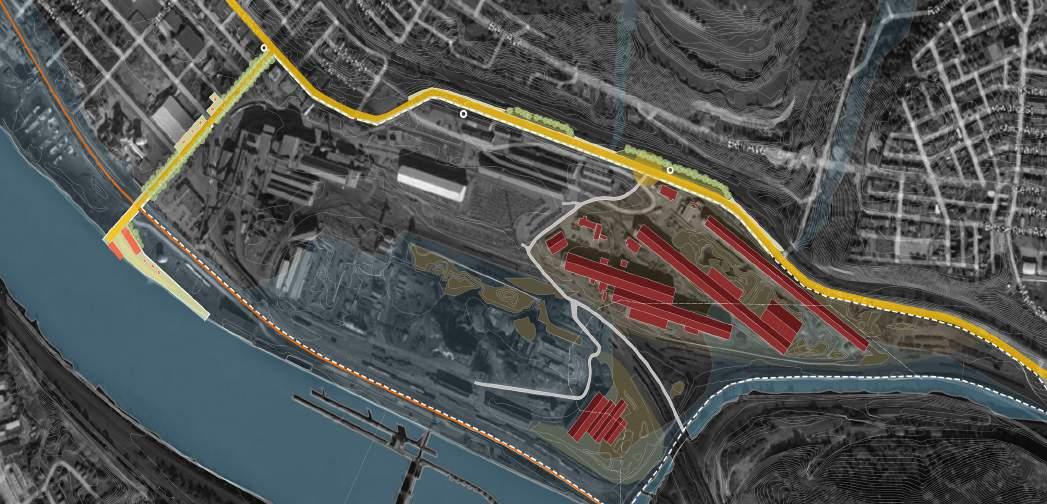

The only public access to the waterfront, the dock offers a great opportunity to be the host for events and community building. The site could host events like a Music Festival, weekend Barbecues, etc.
Braddock Avenue currently works as an unofficial parking lot for the trucks for the mill. However, the proposal envisions it to be a green periphery with green infrastructure and a pedestrian friendly route. The process of community led gardening could play an important role in reclaiming this important edge as public space.Simultaneously, Braddock Public Ramp/Beach area can be cleaned up to improve riverfront access, and the pier be extended, with a shaded seating deck constructed. Mobility and lack of connectivity can also be looked into by establishment of new bus routes, additional bus stops, bicycle lanes, sidewalks, etc. For further development of the site, a committee advisory board needs to be established to negotiate reparations and propose plans for the future of the site.
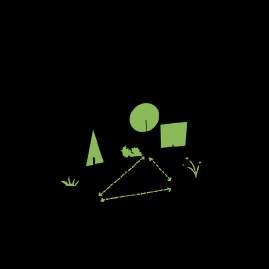
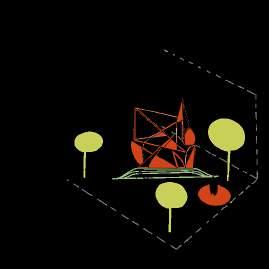


5
Dock Revitalization
Mobility
Slag
Processing
Flood Plain
Public Art and Events
Hubs
Community Led Planting
Community Service Hub
Phase 1 (0-3 Years)
Community Planting along periphery


With the aim of transitioning to green steel, several steps could be taken in the redevelopment of the Braddock Avenue site. It can be a location for rain gardens and green infrastructure such as bio-swales, etc. In the Mill, the first step would be to install a new electric arc furnace for iron making and to shift the casting yard. Hydrogen production and storage based on solar power could be set up in Clairton. The existing coking infrastructure in Clairton could be transformed to produce and supply hydrogen with renewable energy. Functional railway loops for industry would be identified to ensure efficient transportation. Hyperaccumulators could be planted in the open hearth buildings area of zone 1, and defunct railway lines could be subjected to phytoremediation with pioneer species. Wetland protection would be given importance with the removal of unnecessary construction. Blast furnaces would be shut down and preserved as historic relics with salvage of reusable materials.

6 Slag Processing Community Lawn Phytoremediation Riverfront Access Limited Steel Production Mobility Hubs Bioswale Training Center Markets Community Service Hub Community Farm Art Studios
Rain Gardens and Bio Swales along periphery Plant species for Phytoremediation
Phase 2 (3-8 Years)
J F M A My Ju Au S O N D Lobelia Cardinalis Chelone Glabra Iris Versicolor Asclepias Incarnata Annual Perennial Eutrochium Purpureum Lobelia Cardinalis Chelone Glabra Iris Versicolor Eutrochium Purpureum Asclepias Incarnata
BLOOM PERIOD
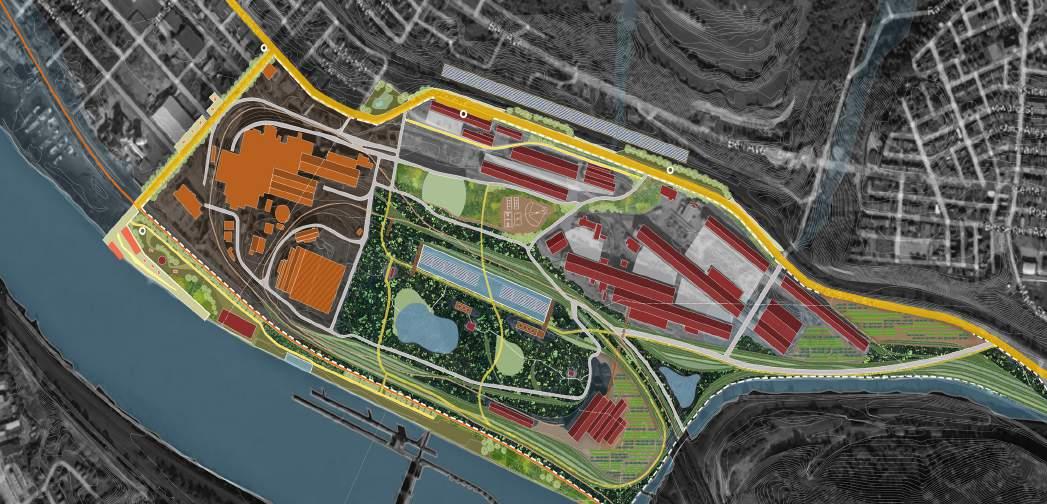

After the Edgar Thomson Steel Works site has undergone a major transformation with the implementation of various green initiatives, the site can now include floating solar panels on the retention pond, connected to a microgrid and further to Clairton for sustainable energy production. The energy generated initially could be used for any public functions on the site and eventually any surplus generated could be given to the community for their further usage. The site could also be transformed with the installation of permeable pavers, landscaping, and berms. Community organizations could plant tree saplings in the urban forest area, ensuring their growth and stewardship. The public riverfront can be made accessible for community use with features such as a beach shore, restaurants, pavilions, pop-up festivals and trails. Additionally, a Center for Community Health can be established, providing crucial healthcare services to the community. The once-abandoned industrial site can be finally revitalized and repurposed into a hub of sustainable energy, health and wellness, and community collaboration.

7 Sustainability Center Seed Bank Community Lawn Urban Forest Retention Pond Public Riverfront Public Art and Events Mobility Hubs Solar Farm Playground Markets Community Service Hub Community Farm
Community Planting along periphery Plant species for Phytoremediation
Phase 4 (15-25 Years)
J F M A My J Ju Au S O N D Helianthus Annuus Brassica Juncea Salix Spp. Thlaspi Caerulescens Annual Perennial Agrostis Stolonifera Helianthus Annuus Brassica Juncea Salix Spp. Thlaspi Caerulescens Agrostis Stolonifera
BLOOM PERIOD




8 Community Engagement
RECLAIMING PLATFORM FUTURES
Urban Design, Research, Architecture, Graduate Thesis | Bangalore, India
Master of Urban Design | 2023-2024
Individual Project
Advisors | Stefan Gruber, Jonathan Kline
Awards | George W. Anderson Award ; Carnegie Mellon Thesis Award 2024
Reclaiming Platform Futures explores the pervasive influence of digital platforms on urban landscapes, particularly focusing on the case study of Bangalore, India. In the last decade, cities worldwide have been increasingly reshaped by digital platforms such as Uber Eats, Instacart and AirBnb. Platform Urbanism, which is a key framework for my thesis, is a field of research which investigates the ways in which digital platforms play a central role in the governance and spatial configurations of cities. This project explores the various, multiscalar impacts and technological disruptions of platform urbanism by exploring and expanding ways in which app-based convenience has resulted in changes in the ways cities operate and propose alternative futures for platform governance.
Access the Thesis Publication

9
Poster Panel for Intervention 1 at Thesis exhibition
Design Intervention 1 - Hiding in Plain sight; Koramangala
The first type is what I refer to as “hiding in plain sight”. They are Leased out commercial buildings with typical commercial/office facades. The structural system is recessed from facade to allow for continuous glazing and natural light, but in the case of the dark store, it is compromised.
Increasing contact points is paramount to nurturing robust social networks among gig workers, community members, and local stakeholders, such as the nearby tire repair shop and street vendors. By strategically expanding these connections, we aim to cultivate a vibrant ecosystem where collaboration thrives and mutual support flourishes. Moreover, envisioning an adjacent food commons, complemented by proactive food recovery initiatives, holds the promise of fortifying food resilience within the neighborhood. This multifaceted approach not only addresses immediate nutritional needs but also fosters sustainability and community cohesion. Through the synergy of these endeavors, we aspire to create a resilient, interconnected community that thrives in the face of challenges.

10 Poster Panel for Intervention 1 at Thesis exhibition
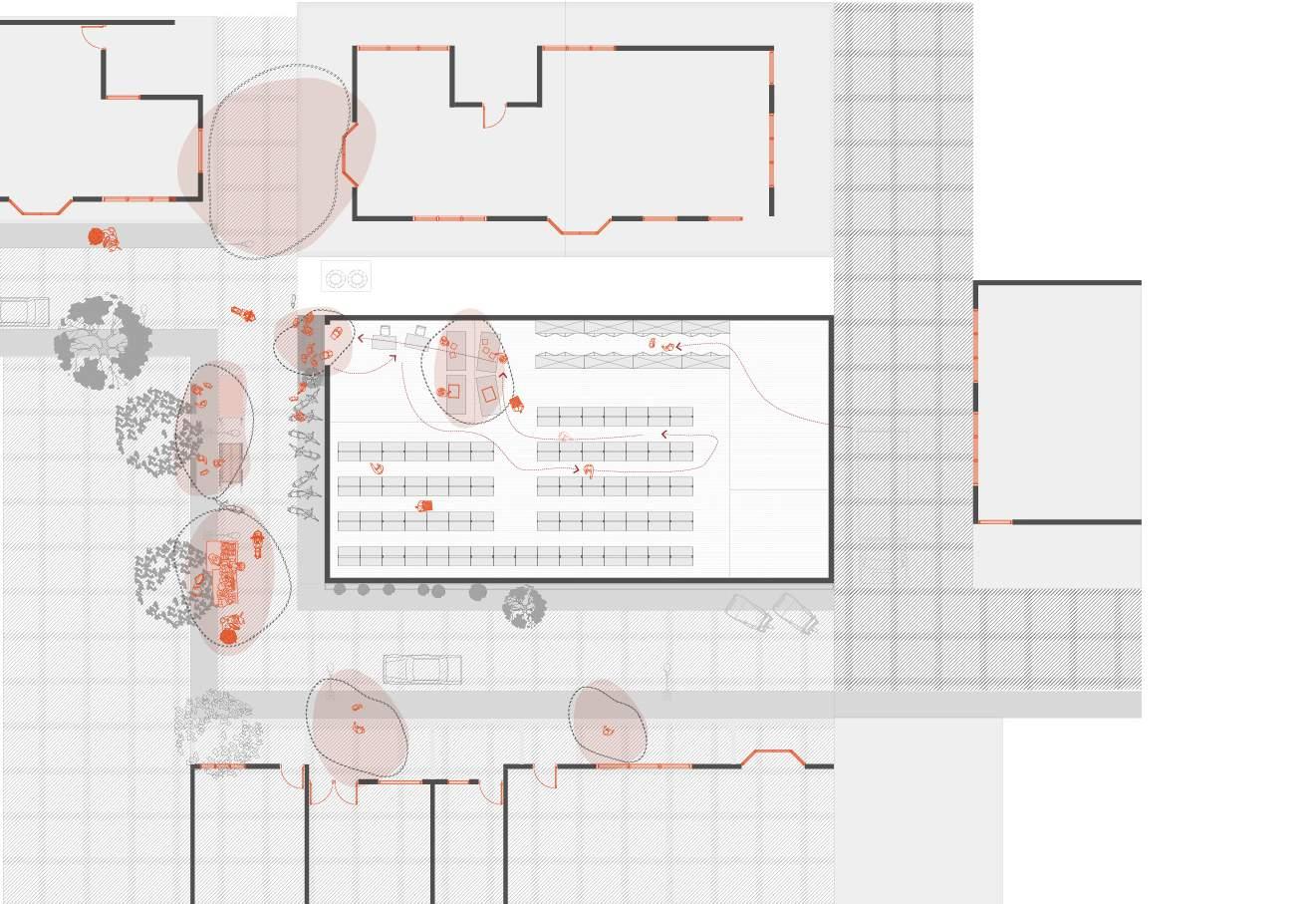
Spatial Anomalies which exist at the neighborhood level make their way up the supply chain in terms of larger, more automated warehouses, occupying farmlands and other rural areas. This is constituted by an invisible labor force which goes beyond the gig workers who work in food delivery and packaging. The project also attempts through graphics and writing to uncover these patterns and labor mechanisms which make this hybrid food supply chain work. These images represent how these dark stores occupy land without any regulation within the city, taking up space with high efficiency and speed.

11 1 1 Order Registry and Packaging Cold Storage Office Stacks and Shelves 2 2 3 3 4 4 Least Consumed Most Consumed Street Vendors Waiting Area Loading and Unloading zone
Neighborhood Dark Store Typologies of Dark Architectures Typical Floor Plan of a Neighborhood Dark Store Peri-Urban Markets Platform Owned Warehouses Cloud Kitchens Platform Owned Distribution Centers
Design Intervention 2- Quick Temporary Structures; Indiranagar
The second type are Quick Temporary Sheds made of Light gauge steel construction, with 2’ x 2’ member spacing and corrugated sheets as facade and roof. These structures are quick ways of occupying space within neighborhoods and starting a warehousing facility.
Harnessing the resources of the local construction yard and recycling station, the building is meticulously crafted utilizing materials sourced from the immediate vicinity. Furthermore, the expansive open space adjacent to the building serves a dual purpose, accommodating both a communal laundry facility and a flourishing plant nursery. This multifunctional area not only meets practical needs but also serves as a vibrant hub for community interaction and green initiatives. From fostering sustainable living practices to providing a serene sanctuary amidst urban life, this shared space enriches the fabric of our neighborhood.

12 Poster Panel for Intervention 2 at Thesis exhibition


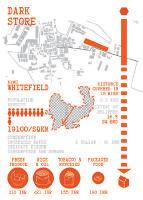




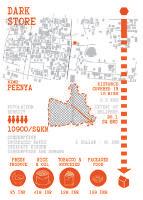
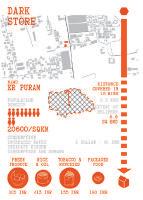

13 + + + + + + + + + + + + + + Traffic Signals Wrongful Confirmation Order Refund Use Available Items Out of Produce and Material Traffic Delay Traffic Delay Reassign Driver Food Spillage Wrong Order Unsatisfactory Food Quality Reduced Future Orders Change in Customer Behaviour Impact on Rating Impact on Rating Damaged Packaging Refund Food Thrown Away Delayed Delivery Time Accidents and Mishaps Vehicle Repair Refund Food quality impacted Fuel Wastage Medical Insurance Claim New customer order Quick Refund GPS Signal Lost Glitch Processors and GPU GPU and Servers Shipping and Cargo Railway infrastructure New warehousing typologies Intracity logistics Written Examination Job Application Outsourced Spaces Rating check Interview Provisions Helmet and Jacket Storage Kit Rating Check Locations of Interest First Delivery Cancelled Order Formal Waste Cycle Unpaid labor Recycled Plastic and Cardboard Unpaid labor Feedback Loop Feedback Loop Waste Picking Sorting and Recyling Informal Waste Collection Incinerators Dismantling of Boxes Energy and Fuel Electric Substations Diesel and Kerosene Surveillance systems Machine Learning API Infrastructure Data Analysis Parastatal Agencies Junkyards Waste Carts Organic Waste Separation Intercity Trucking Shipping Logistics Landfill and Disposal Deep Time Plastic Disposal at sea Government Recycling Centers Territorial Proximity Current order Formal Education Own or Rent Motorcycle Personal Loan Cables and Routers Crowdmapping and Surveillance Infrastructure Order Processing and Food Preparation 3 min 1 min 6 min next order Delivery Person Assigned Delivery Picked up and in Travel Handover and Successful Delivery Customer Feedback and Order food. Transportation Getting a Gig Labor and Nature Consumption and Data T h p y d s D M D F o d A i l b l y P h e M n o ng Dip M n g Cu me Fe db k a Tim D ta e s Us Beh Payme T k g Co a ton D ta le Lo a y o am E M ng pd e d g pd e D a Fa og e C m Keys n C d Ca o Ch e changes Tag edAd S geP i De r Geof ncng L yal Pog m F odP ef r nc Ca s a dCa t e Rep yT ch S a H t y M n m p i i O d P d n L R u T d g R GP N g a H m S y Ro e a d Cab e Hghw y Tollb o hi l DP e tDe e GgRd De e G g l MapDa C t me gs G Mappng Wb eCookes e ewp g ms E c yDa T g D a A R G d eh C m beh D o o ma ng Re an o M uCa g UU de opm nt Col randth m Demog phcDa F m Da a W ho s otng U e D i g D k S o d a L o a to p o l e F o d g g g S c d C D ANATOMY OF A PLATFORM DELIVERY Planetary implications of an Online Order (Ethnographic research) Community Accessible Card Deck documenting dark stores
Design Intervention 3- Hybrid Occupancies; Bhadrappa Layout
Hybrid Occupancy is where the platform starts to occupy part of a larger mixed-use building. This scenario usually results in the appropriation of spaces around the building for their loading/unloading and storage.
Exploring synergies between adjacent spaces presents an exciting opportunity to optimize the functionality of our built environment. By carefully considering how various typologies can complement each other, we unlock the potential for holistic community development and resource utilization.
Building upon this principle, we recognize that the existing kitchen within the building represents a valuable shared resource. Beyond its primary function, this culinary space can serve as a focal point for collaborative endeavors, such as cooking classes, communal meals, and food-based entrepreneurship initiatives.

14
Poster Panel for Intervention 3 at Thesis exhibition
As perception of the digital and physical collapses everyday, this project foregrounds the realities of platform urbanism in cities and offer an alternative liberatory future which is rooted in just transitions of infrastructure, labor and platform governance. This project is just the beginning and I hope to further this research beyond this book and masters thesis. The following are images from the thesis show and exhibition at Rockwell Park, Pittsburgh held on May 6th,2024.
The model is an attempt at abstracting the entanglements and symbiotic relationship between systems level planning and neighborhood and community driven design.
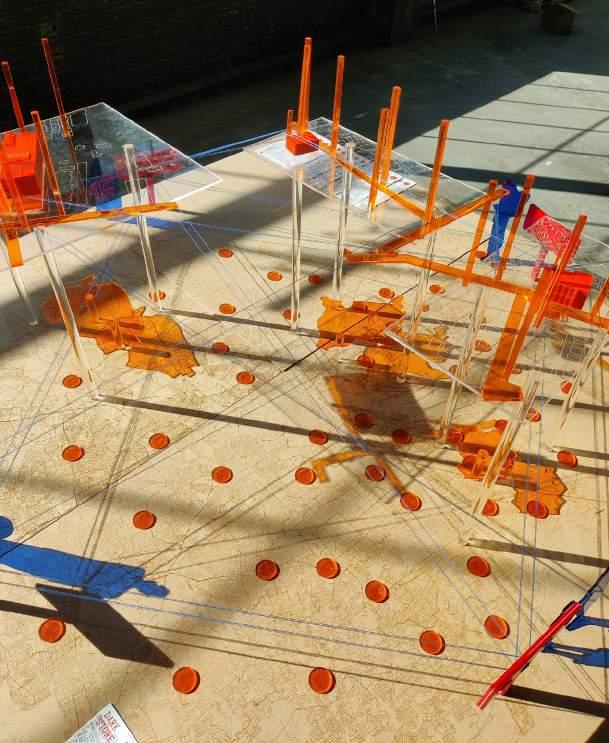



15
SEAMLESS SEATTLE
Urban Design, Mixed Use| Seattle
ULI Hines Competition| Spring 2024
Collaborators | Autumn Dsouza, Yash Parikh, Shreya Mathur, Srujjan Gajjala Advisor | Christine Mondor
The competition brief was aimed towards increasing density of Seattle’s downtown area, specifically focussing on the civic campus which includes the City Courts, a correctional facility and the historical Yesler building.
“Seamless Seattle” emerges as a transformative initiative, aiming to weave together historical narratives, revitalize natural ecosystems, and breathe new life into the city’s core. Nestled amidst the innovation of diverse communities and rich ecologies, the project envisions bold and equitable change for downtown Seattle. At its core lies a vision of a cohesive, inclusive, and environmentally conscious city, breaking free from unjust historical frameworks. The project revolves around four key tenetsReconnection, Regeneration, Rejuvenation, and Rebuilding.
Seamless Seattle distinguishes itself by retaining vital civic functions on-site. The adaptive reuse of the jail into a museum and center for justice and change serves as an educational hub, shedding light on the justice system and inspiring societal progress.

16
At a regional level, the project aims to stitch the seam created by the highway infrastructure which runs through Seattle. This would help redistribute and connect ecological systems on either side while also acting as public interfaces for the communities on either side. Historically Redlined

Intervention Zones Parks and Green Zones
Highway Infrastructure
Environmental Justice Areas
Combined Sewer Overflows
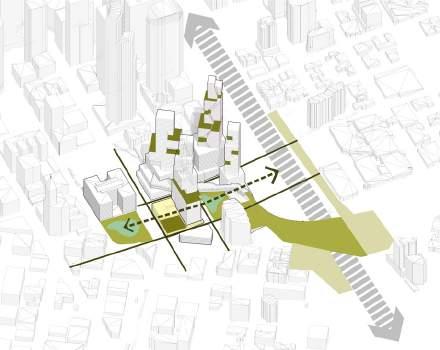


17
Neighborhoods
Drainage Basins
LEGEND
Strategy Plan
Green infrastructure and public zones

18
The project is divided into three phases, each functioning on its own. The first phase simultaenously addresses the adaptive reuse of the King County Courthouse and the historical Yesler building along with the construction of the largest tower block on site. The second and third phase are spread out over the construction of the three towers and the infrastructure of the Yesler linkway which is a highway lid connecting across to the neighborhoods on the other side. The entire project is spread out over 10 years.

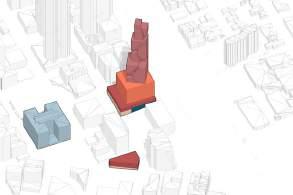





19
Residential Section A-A’ Section B-B’ Project Phasing Site plan Commercial Community Retail and Care Hostel and Service Apartments Parking Retail
Phase 1
Phase 2
A’ A B B’
Phase 3
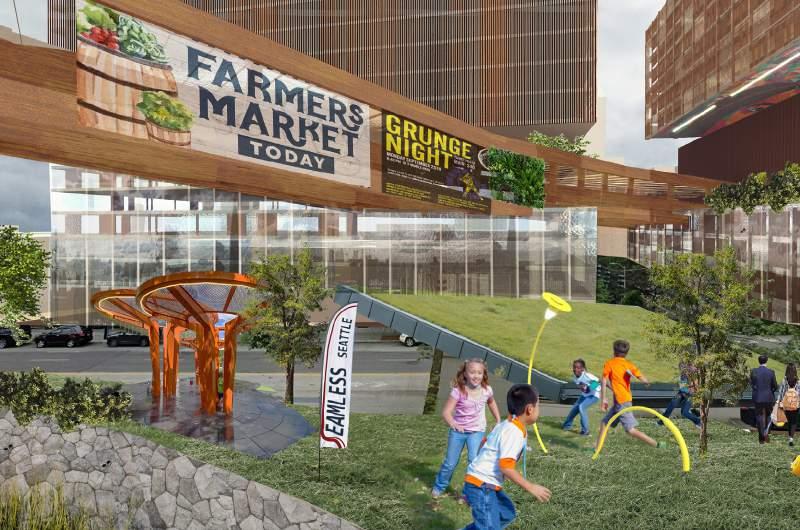

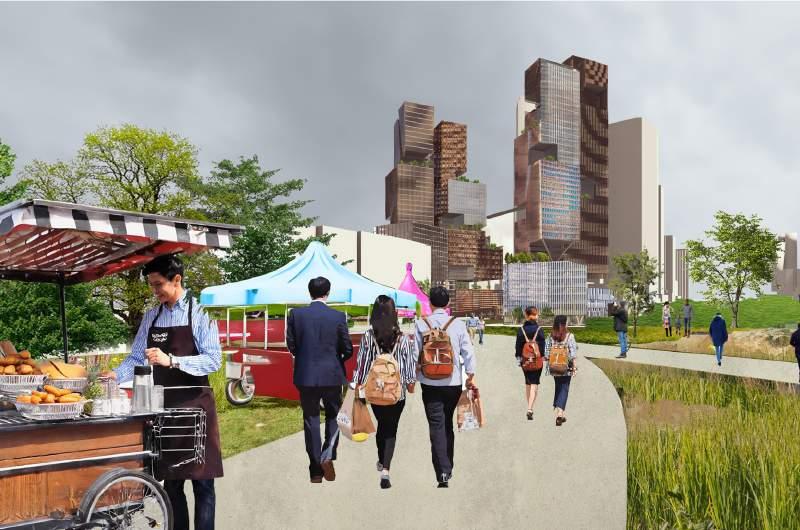
20 Pioneer square is connected to the International
through a
District
sloping plaza
Yesler Linkway is reimagined as an accessible public space connecting neighborhoods.
The frontage of Goat hill Garage is envisioned as a performance space and amphitheater
BRIDGING OAKLAND
Urban Design, Adaptive Reuse| Pittsburgh,PA
Master of Urban Design | Fall 2022
Collaborators | Yash Parikh
Instructors | Stefani Danes
The Herron Hill Community Service Hub Proposal is an attempt in recognising the water infrastructure and providing and identity for North Oakland, a historical neighborhood in Pittsburgh.
The location of the site is at the intersection of Center Avenue and Dithridge Street in the upper part of North Oakland. Center Avenue is a prominent East-West Connection corridor in Pittsburgh and due to this, the site and building have a high visibility. The buildings on site include the main pumping station which is still functional and the defunct laboratory at the rear. North Oakland and Upper Hill towards the North West have been segregated by geography and class throughout the last century and the impact of the separation exists today. Although separated through geography and administrative boundaries, this historical infrastructure network has connected neighbourhoods. The structure was determined viable for historical status as of 2020. Through various modes of mapping and analysis, interviews and other resources, the aim of the project was to propose a solution rooted in the dreams and aspirations of the community.

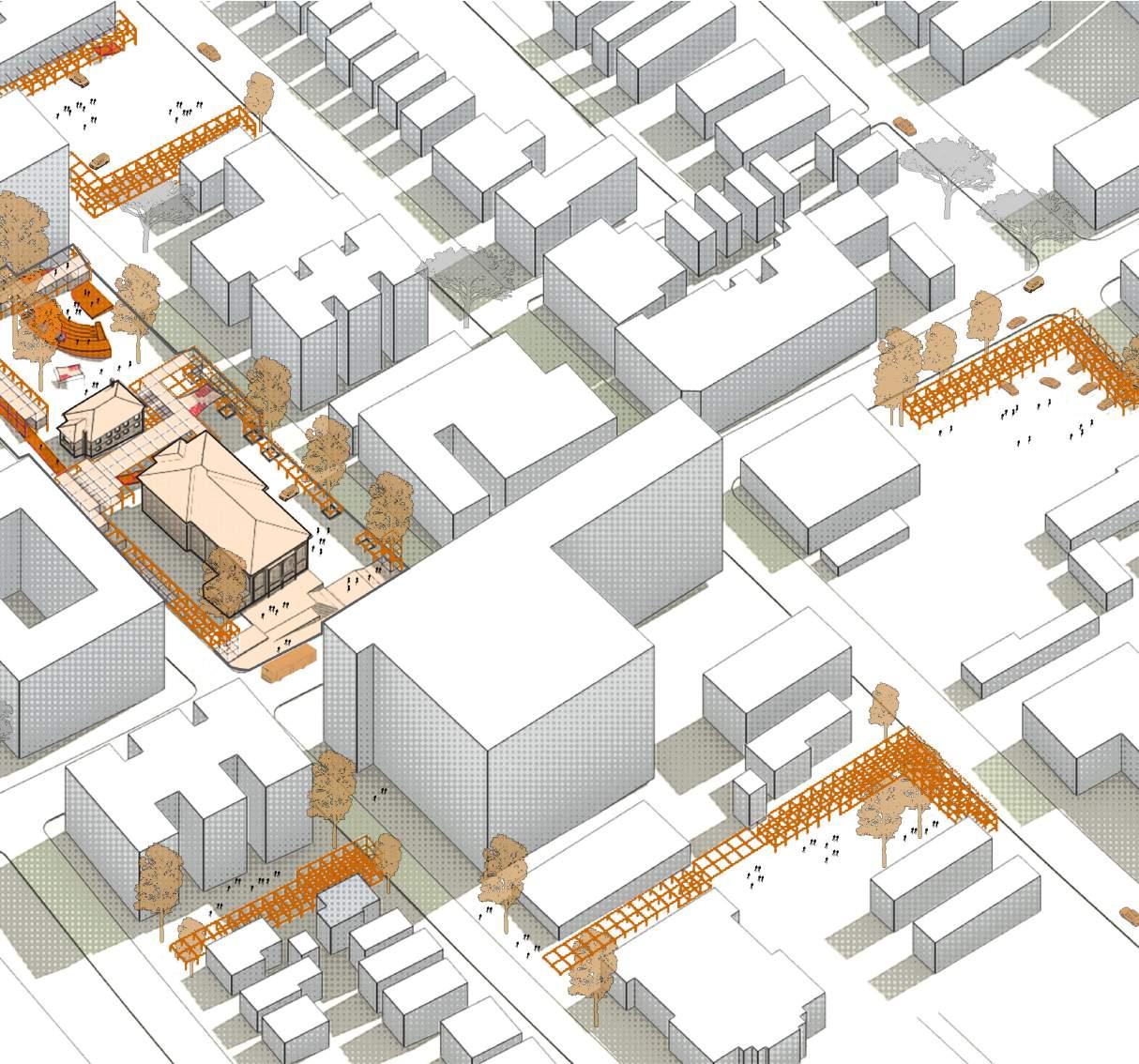
21
Axonometric of Comprehensive Plan
The strategy for the CSH of North Oakland is to create a well-connected node in the neighbourhood which also can be accessed by the surrounding areas. The diagram shows our primary intervention areas which are defined by the access corridors. We envision this intervention being a catalyst of change and allowing for varied modes of interaction, access and activity.

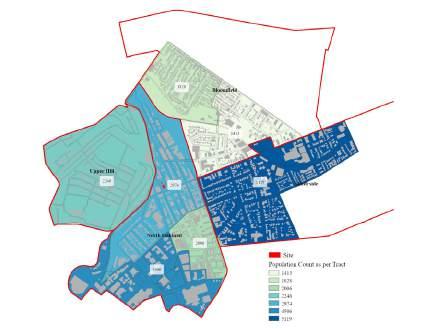
The population of North Oakland and the surrounding neighborhoods justify the location and provision of a community hub.


Heights Parking Lots
Most of the buildings in North Oakland are above 60ft in height and do not have access to public, open or green space.
North Oakland is fragmented by the presence of large open parking lots. These lots are mostly paid public lots which could be used for multiple functions.
22
Population Analysis
Building
The Herron Hill site acts as a nucleus for the neighborhood and acts as a template for change. The site would have a multitude of functions including the performance space, the museum of water infrastructure within the lab building and meeting spaces for the community. The parking lots around the neighborhood would be provided with the scaffolding module which would provide frameworks for pop up markets, local groceries and other bottom up modes of culture production.

23
The temporal nature of the scaffolding means that it would be lightweight, easy to transport and could be used for multiple functions. We understand the seasonal nature of such spaces, but over time we envision few of these pods and modules to be more permanent in nature based on feedback from the community.

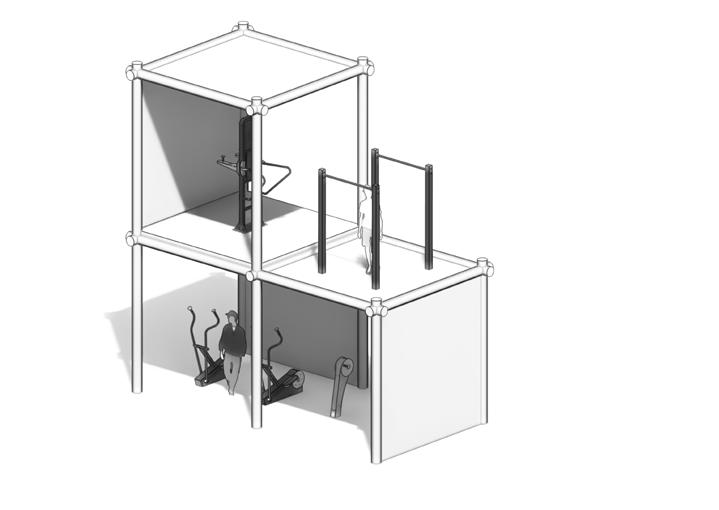
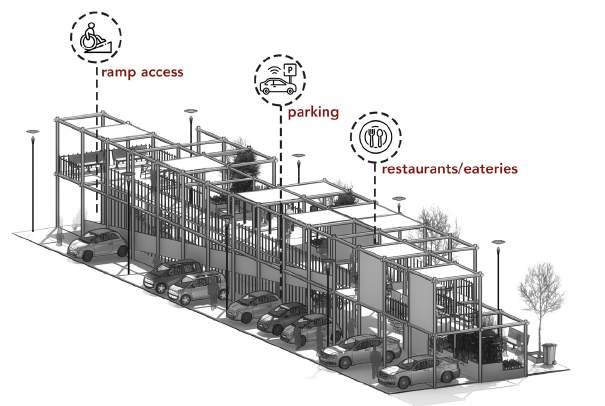

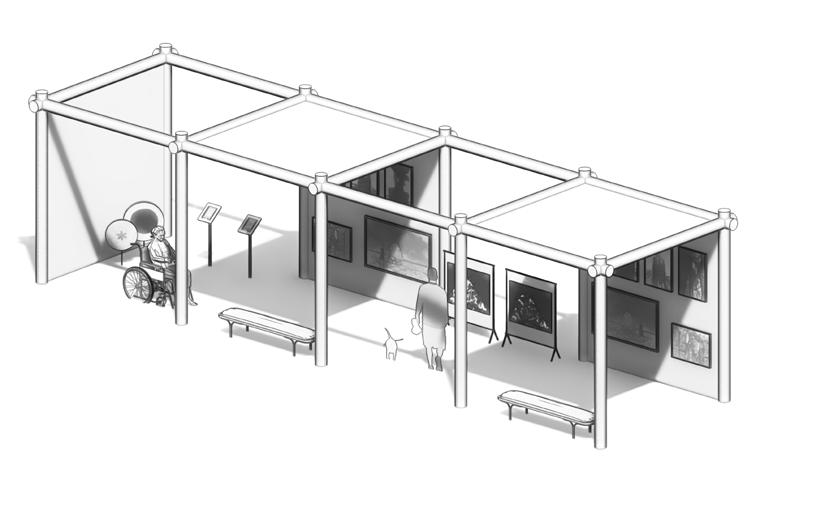

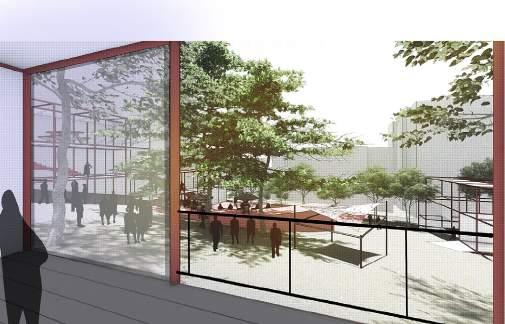
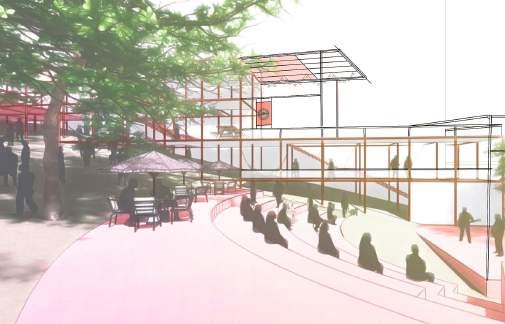
24
Fitness zones for the community to promote a healthy lifestyle.
Open galleries for local artists to promote art and installations.
Shared allotment gardens which could be used by the community during the summers
Repurposing Parking Lots
Vacant plots are leased from the city and treated as infill zones where the modular framework can be used to create flexible spaces for the community. These infills are shared spaces which have functions such as grocery stores, pop-up stalls and community libraries.













25
Digital library Reading Rooms Community Farm Shared Kitchen Local markets
Identify | Stitch Situate| Scaffold Consult| Experiment Localize| Layer
Thoroughfare
Sketches for Charrette
SUMMER INTERNSHIP | EVOLVE EA
Designer + Analyst | Pittsburgh, PA
Summer Internship | 2023
Involvement | Urban Design, GIS Analysis and Mapping Landscape Design, LEED Analysis, Community Engagement
EvolveEA is a nimble multidisciplinary practice situated at the intersection of sustainability and the built environment.
During an intensive period of 3 months in the summer, I was able to work on projects of diverse scales ranging from architectural design to comprehensive planning and public space design.
My internship also included GIS oriented analysis work which was presented through reports to various communities in Allegheny County, PA. Additionally, I was able to successfully complete life cycle analysis for LEED for upto three ongoing architectural projects.

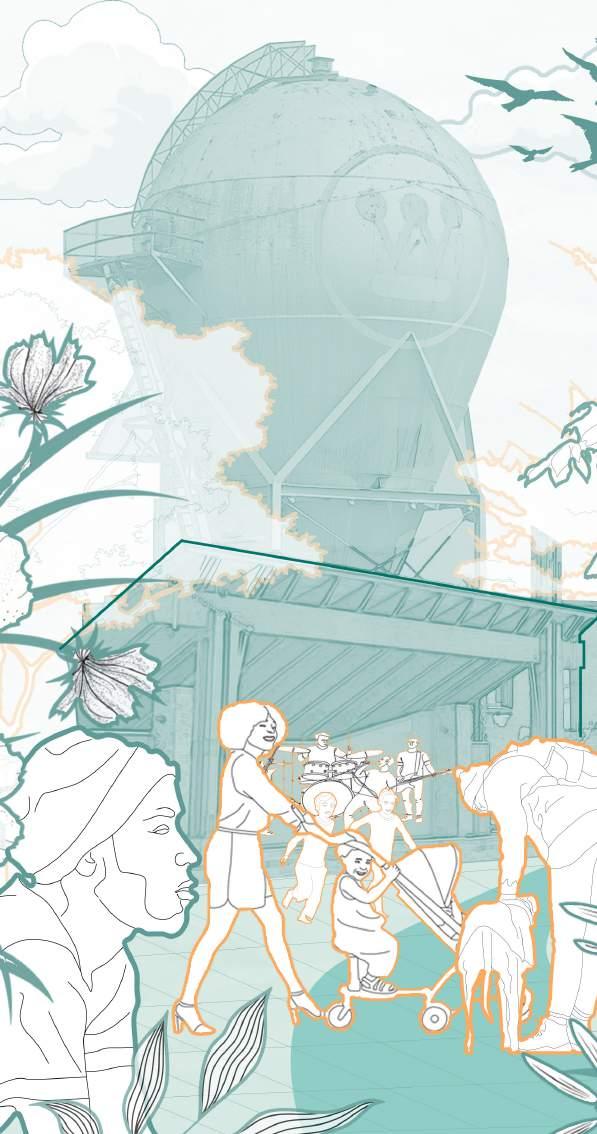
26
Posters made for a Community meeting and Charrette at Forest Hills, PA
Millvale GAPP Park Redesign
As part of the ongoing vision of the Allegheny Together project, EvolveEA has played an important role in reassessing the business districts of many underserved communities across the county. One such community is Millvale. An important public anchor in the community is the Millvale Park which is currently underutilised.

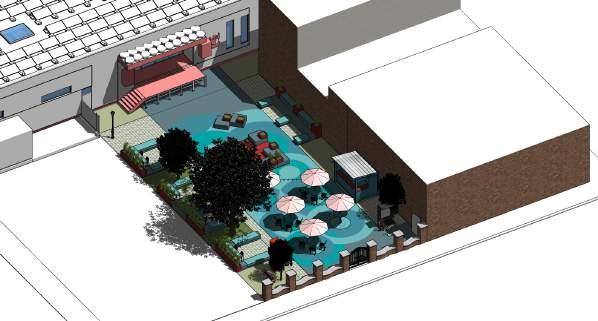
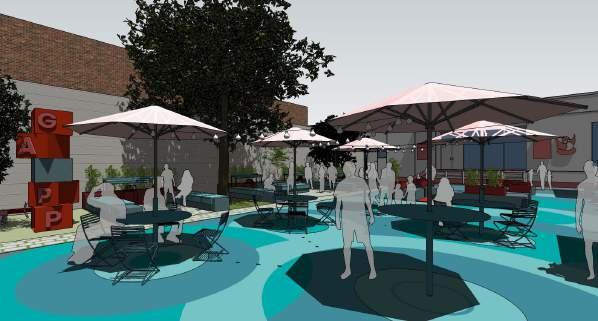
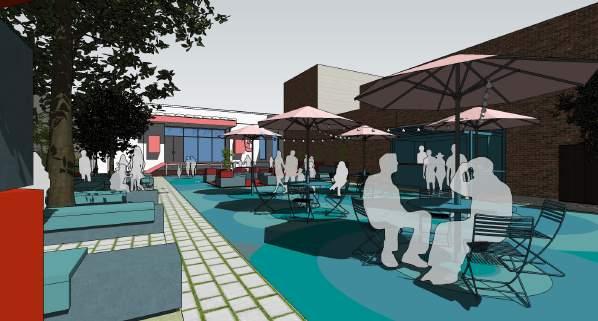
27
Analysis of Millvale main street and potential city owned parcels that could be leveraged for transformation.
A vision for the Millvale Park as a vibrant public space and temporary music venue
LEED Oriented Work
EvolveEA are industry leaders and experts in addressing the sustainability requirements of various projects. As part of this, it involves accreditation of buildings for LEED certification. Neighborhood Density points and Life Cycle Analysis form two important ways of achieving the same. Athena wbLCA was used for the calculations.
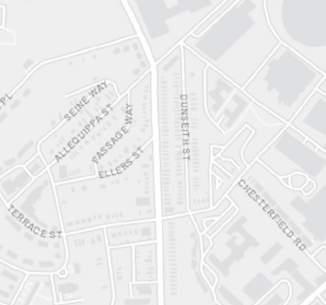


LEED LCA Measure Comparison Report Cradle to Grave (A to C)
Reference Design: UPitt Baseline Building UPitt SHRS Interior-01 Proposed Design:
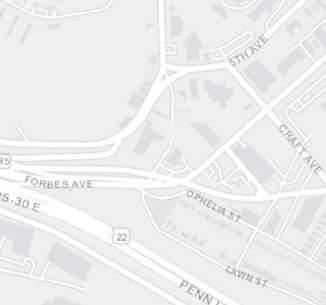




Printed By: KOUSHIKLEGION\koush Printed On 7/6/2023
LEED LCA Measure Comparison Report Cradle to Grave (A to C)
Reference Design: UPitt Baseline Building UPitt SHRS Interior-01 Proposed Design:
28 Residential Non-Residential Building Types Site Density Zone Boarder Site
Zone Site Buildable
mile of site: 172.4 Acres Residential Area: 1,089672 SqFt 6321 SqFt/Acre Non-Residential: 12,715238 SqFt 73,754 SqFt/Acre Building Area Combined: 13,804,910 SqFt 80,075 SqFt/Acre Green Space
County
EPA,
OpenStreetMap
user community 0 0.22 Miles ¯
Density
Area within 1/4
(Exempt)
of Allegheny, West Virginia GIS, Esri, HERE, Garmin, GeoTechnologies, Inc., USGS,
Esri, HERE, Garmin, (c)
contributors, and the GIS
LEED Urban Density analysis conducted for a design scheme in Oakland, Pittsburgh. Whole building Life Cycle Analysis successfully incorporated and calculated for design scheme in Oakland, Pittsburgh. Page 1 of 2
11:11:33 AM
Summary Measure Unit Reference Design Total Effects Cradle to Grave A to C Proposed Design Total Effects Cradle to Grave A to C % Difference Global warming potential kg CO2 eq 4.84E+07 4.46E+07 -7.84% Stratospheric ozone depletion kg CFC-11 eq 4.19E-01 3.88E-01 -7.29% Acidification of land and water kg SO2 eq 2.40E+05 2.16E+05 -10.07% Eutrophication kg N eq 2.53E+04 2.32E+04 -8.44% Tropospheric ozone formation kg O3 eq 4.37E+06 3.93E+06 -10.03% Depletion of non-renewable energy resources MJ 7.05E+08 6.49E+08 -7.93%
ZEN DEN
Modular Home, Residential, Design for Disassembly| Multiple Locations
Professional Work | 2018-2022
Sanctuary Architects and Designers
Involvement | Design, Site coordination, Detail Drawings, Branding, Visualisation, Financial Anaylsis
India in the last decade or so has been faced with a unique urban situation - where the urban fabric is transitioning towards a global economy while on the other side, the lack of effective building solutions to facilitate this change has hindered the process. Current residential typologies in Indian cities are still based on concrete construction and thereby lack flexibility of use and time-based solutions.
The Zen Den project aims at providing a solution to this through an efficient and modular housing/building typology based on lightweight and fast construction, flexibility and adaptability to existing built contexts and a customisable interior. The design is envisioned as a symbiotic architectural language to existing urban and rural conditions. The project aims at providing a solution to this through an efficient and modular housing/ building typology based on lightweight and fast construction, flexibility and adaptability to existing built contexts and a customisable interior.
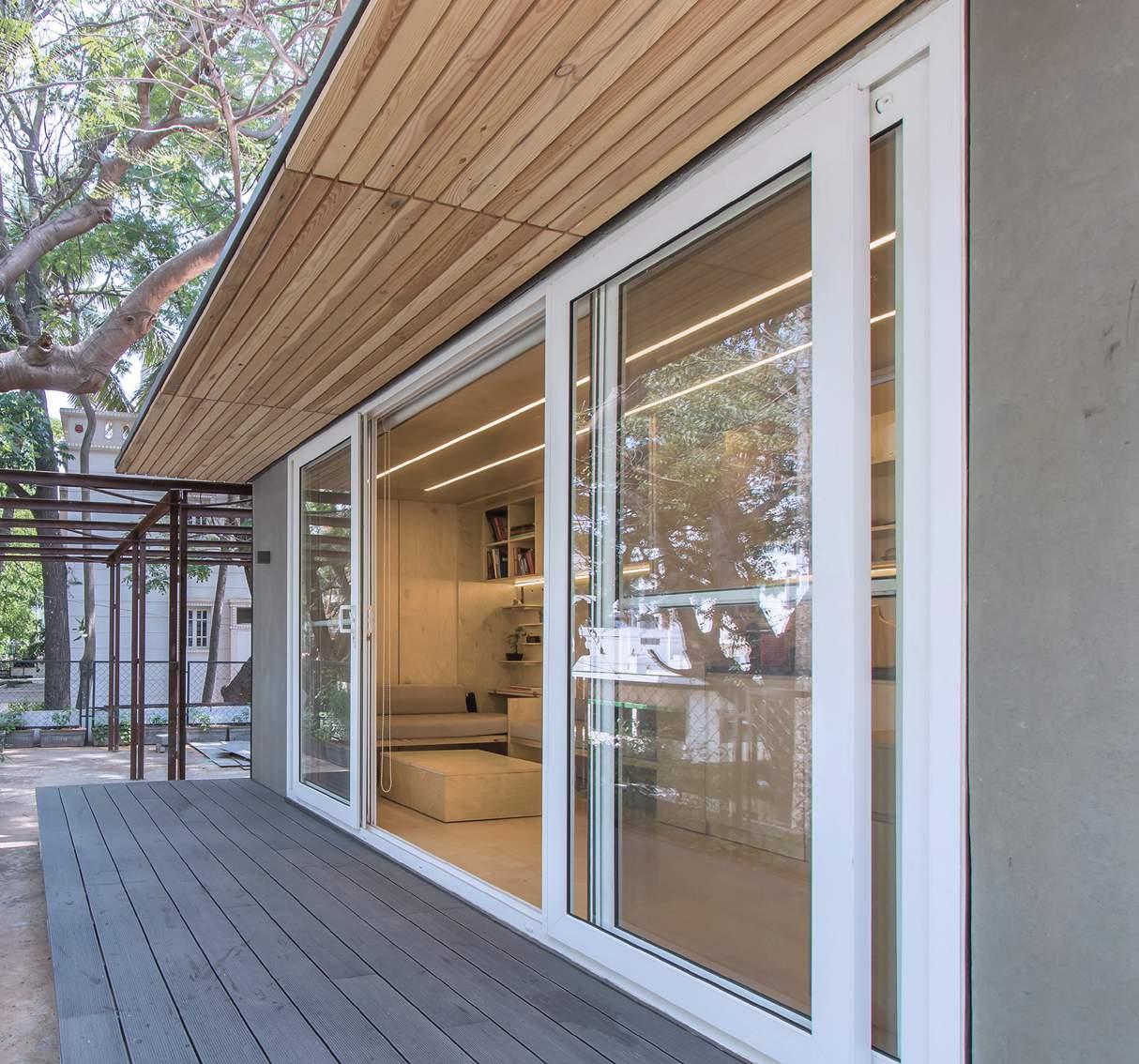
29
The Construction
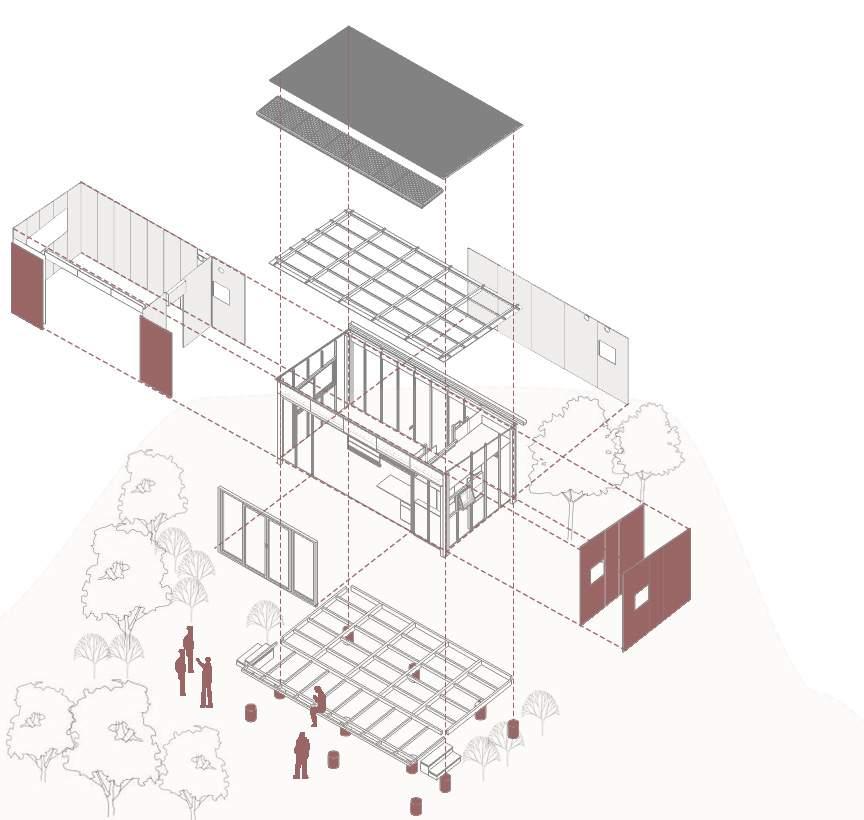
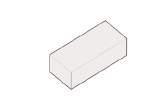


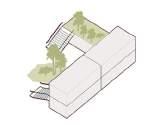






30
Single unit Part 7b. lightweight galvalume roof
Part
5. roof and false ceiling metal framework.
Part 3. exterior fiber cement boards
Part 2. floor and wood plastic composite deck framework
Part 1. concrete pilasters fixed to the ground
Mixed-use
Part
4. vertical metal framework and supports Part 6. internal birchwood boards with expansion joints Part 7a. internal birchwood boards with expansion joints Cluster Dwellings Multi Storeys Landscaped modules Reimagining the deck
iterations
+ 40x15 - entertainment lounge 20x14 - resort 36x10 - extended live 20x10
live/social/work
-
The Details
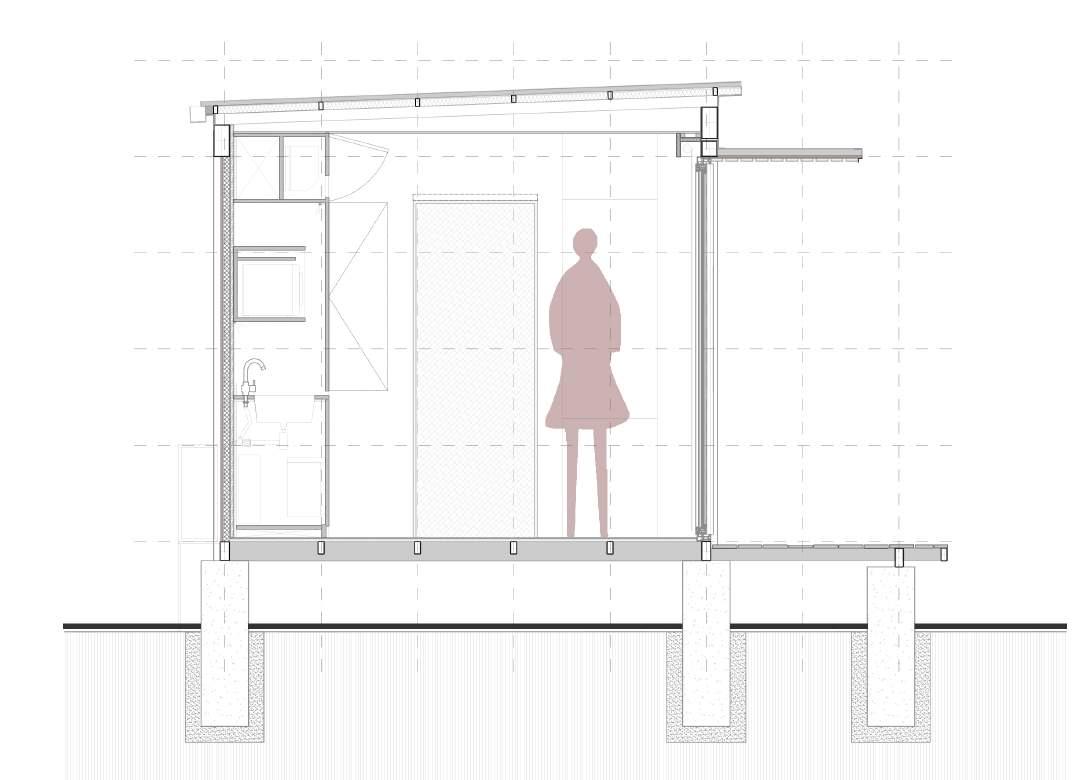
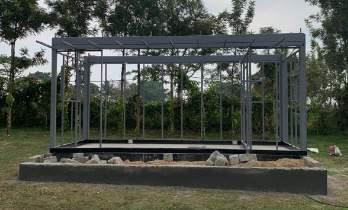
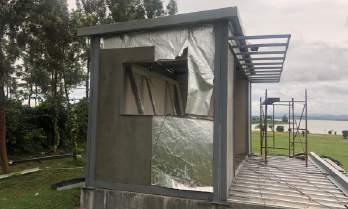




31 primary galvalume roof fixed to 50 x 50 metal sections with polywool insulation 50mm thick polywool insulation 50mmx100mm MS section for room framework 100mmx100mm and 200mm x 100mm MS sections used as lintel and fascia beam uPVC sliding door section fixed to structural member 20mm thick plywood internal ceiling fixed to roof framework uPVC sliding door section fixed to structural member 12mm thick laminate flooring fixed onto 18mm thick heavy duty fiber cement board 20mm thick WPC planks fixed onto 50mm x 25mm metal deck framework. 400mm radius concrete pilasters 100mm x 100mm GI gutter fixed onto roof sheet 100mm x 200mm MS beam 9mm fiber cement board as internal board fitted with 20mm thick birch wood panelling 40mm x40mm vertical MS member as interior support 30mm thick corrugated galvalume roofsheet secondary galvalume roof fixed to 50 x 25 metal sections with pine wood under-cladding uPVC prefabricated doors with 8mm thick toughened glass shutters 18mm thick fiber cement board fixed over metal framework and finished with 12mm laminate flooring. 20 mm thick porous Wood plastic composite (WPC) planks fixed onto metal framework for decking. Air conditioning outdoor unit clamped onto external wall Sink and interior pantry counter fixed onto 9mm thick fiber cement board flap provided in interior panelling to accomodate air conditioning unit 4mm thick continuous gutter provided on the rear side
framework in 2’ x 2 ‘ grid modules assembled at site. Floor framework could either be a plinth or metal fabrication depending on the requirement. External weatherproof boards are fixed to the framework and 4mm thick insulation is provided in between and prevents excessive heat entering the den. The interiors and exterior cladding are added as the final step, with windows and doors completing the product. The timeline for the entire process is 30 days.
Structural
Detail A Typical Cross Section A B C Detail B Detail C


The interiors are designed to accommodate as many functional aspects as possible within a restricted space. By replicating the modular grid within, the interiors are easy to assemble.

By introducing flexible furniture such as fall down or murphy beds and movable tables, the den transforms as per functional and user based requirement.



interiors which fit within an easy to assemble exterior make the den the right alternative for temporal structures.
32
Flexible
AN ATLAS OF COMMONING
Urban Design, Urbanism, Research| Pittsburgh,PA ; Tbilisi, Georgia
Master of Urban Design | 2023-2024
Collaborators | Stefan Gruber
Involvement | Research, Documentation, Field work, Curation, Website Design
Through intensive fieldwork in Tbilisi, Georgia, this ongoing research project aims to add to the already diverse range of examples found in An Atlas of Commoning, an effort at documenting and bringing to light various commoning practices from across the world. As part of my research with Prof. Stefan Gruber, who heads this effort, I have also started to diagram and expand on various patterns of commoning which exist including spaces, practices and overarching concepts. The work is an attempt at documenting, analysing and bringing to light various, diverse practices which could provide new modes of resource sharing and the production of space, which is deeply rooted in the ideas of ownershipaccess , production-reproduction and rightssolidarity with the commons as a foundation.
Access the Atlas
KIBE
PROJECT
itself but also to emphasize the significance of activating one element in the courtyard house that can serve to support and preserve the space’s social dynamics.
KIBE PROJECT
Tbilisi, Georgia, 2019
Kibe Project was started to restore an important staircase that was dilapidated within one of the communal courtyards in the historic district of Tbilisi, Georgia. Prior to the soviet period, these courtyard houses or “Ezos” were owned by a single wealthy family. During the soviet period, they were redistributed among multiple families and shared infrastructure such as staircases, courtyards and corridors became an integral socio-cultural aspect of these houses. After the Soviet period, hyper privatization of the courtyard and other communal spaces resulted in the lack of care and maintenance of shared infrastructure. With many of these houses set for demolition due to gentrification and higher land prices, there was a fear that the architectural and cultural heritage of these Ezos would be lost. The Kibe project is a response to the lack of intervention from the state towards the maintenance and care of shared courtyards.
In collaboration with the local municipal government, residents of the homes and Conservation organizations, the project aimed to preserve the historic and cultural fabric of the city while also reconciling the relationships of the residents with the heritage value of the spaces. Through a detailed survey of the staircase, its structure and surrounding geology with the help of volunteers, the Kibe project successfully submitted an architectural proposal to the municipality which was approved. The restoration effort was taken forward with the help of the residents and other volunteers and was completed in a year.
For more information, visit Instagram: @kibe_projekt
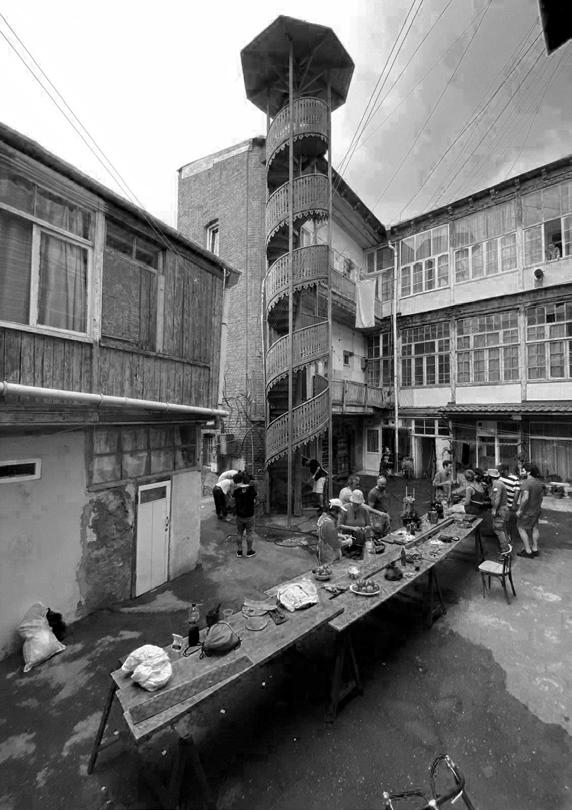
33 U - Shaped Courtyard Kibe Project L - Shaped Courtyard Caravan Sarai We worked with the residents, architects and volunteers within this courtyard to repair the staircase. We were able to learn and understand historical carpentry techniques together. -Nika Gabiskiria I used to live here and the courtyard was used as a parking lot. The staircase was extremely damaged. We started the Kibe Project as a way to reconcile the residents’ relationships and social dynamicswith the courtyard. -Thomas Ibrahim After the restoration of the courtyard, we have started smaller repair works all around the Ezo.
TBILISI, GEORGIA NEGOTIATING EZO/ ITALIAN COURTYARD OWNERSHIP IN OLD TBILISI 19TH CENTURY SOVIET PERIOD POST 1991 Private During the 19th and 20th century, the Ezo houses were owned and occupied by a single, wealthy family. The Ezos were divided up during the Soviet period and distributed among worker class families. The courtyard was a shared space among the families. After the Soviet period, the Ezos have become privatized further through the slow land grabbing of the courtyard. Common/Shared Public AN ATLAS OF CO W W W W W W W W W W W W W W W W W W W W W W W W W W W W W W W W W W W W W W W W W W W W W W W W W W W W W W W W W W W W W W W W W W W W W W W W W W W W W W W W W W W W W W W W W W W W W W W W W W W W W W W W W W W W W W W W W W W W W W W W W W W W W W W W W W W W W W W W W W W W W W W W W W W W W W WWW WWW WWW W W W W W W W W W W W W W W W W W W ONING W W W WWW COMMON
Due to a lack of funds and the complexity of its construction, the residents have been unable to maintain the staircase for several decades. Now with the staircase in an urgent condition, a conservation plan is not within their means of residents, even though some of the neighbors rely on the structure to access their homes. This presents the issue of losing valuable cultural heritage in a city which is rapidly losing its historical character, and an evident hazard to the community. Since our project has been approved by both the municipal cultural heritage and architectural departments, our plan is to complete the project through crowdfunding in a year. We are organizing a conservation workshop in collaboration with the residents, carpenters, local architects, and conservationists.
goal was not only to maintain the artefact
KIBE PROJECT
GROUND
The
Excerpts from the Kibe Projekt, http://www.staircase.ge/about.html, Accessed November 9, 2023. An Atlas of Commoning Orte des Gemenschaffens An ifa exhibition in collaboration with ARCH+, ifa (Institut fur Auslandsbeziehungen) is Germany's oldest intermediary organisation for international cultural relations, having celebrated its centenary in 2017. ifa is supported by the Federal Foreign Office of the Federal Republic of Germany, the state of Baden-Wuttemberg adn its capital Stuttgart. www. ifa.de/ed ARCH+ is Germany's leading publication for discourse in the fields of architecture, urbanism, and related disciplines. www. archplus.net Graphics Design Heimann Schwantes, Berlin © 2018 Institut fur Auslandsbeziehungen e.V. (ifa), Stuttgart, Germany; authors; artists Posters This drawing collage by Koushik Srinath is based on fieldwork, secondary sources, and materials from 1. Kibe Project Website KIBE. (n.d.). http://www.staircase.ge/ kibe.html 2. Tbilisi as Palimpsest Ziaiemehr, Turan. “Tbilisi as Palimpsest: Patterns, History, and Perceptions, in the Formation of a Reactive City,” 2023. 3. Public interview with Thomas Ibrahim and Nika Gabiskiria conducted on October 15th, 2023, in Tbilisi, Georgia A research project by the Master of Urban Design at Carnegie Mellon Univeristy Photo Kibe Project, 2019
Revitalizing community life in courtyards through preservation, maintenance and care of shared heritage.
Poster made through research and field work of Kibe Project in Tbilisi, Georgia
Research on Commoning
As part of my research for the Remaking Cities institute, I have started documenting and diagramming various patterns of commoining, broadly through the lens of concepts such as degrowth, community economies etc, practices such as scaling up,out and deep, mutual aid ect and spaces such as community laundries, cluster apartments, community ovens etc. These active examples represent diverse modes of resource production and sharing across the world. They will be captured together in a website which is currently under development.

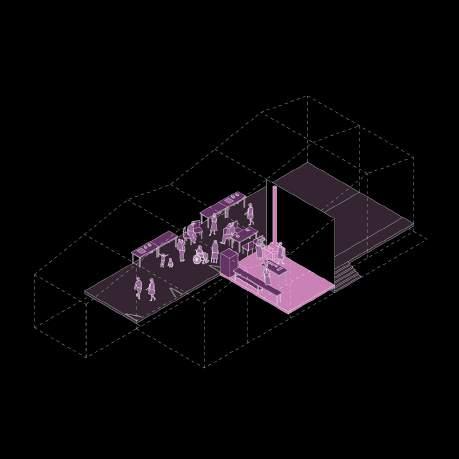
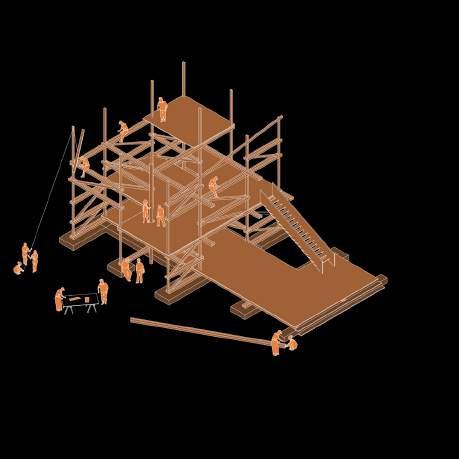
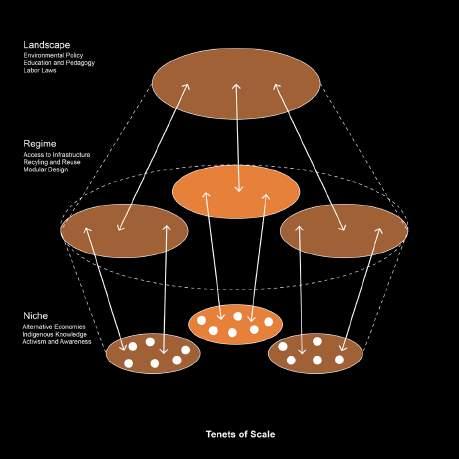
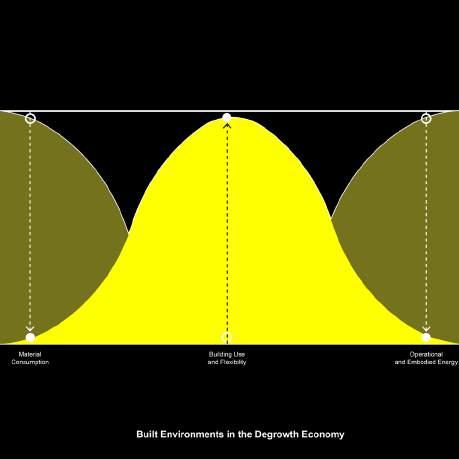

34
Space : Community oven at R-Urban, France
Practice : Scaling Up, Scaling Out and Scaling Deep
Concepts : Community Economies Iceberg
Space : Community Laundry at LaBorda Housing, Spain
Practice : Mutual aid through Barnraising, Prinzessinengarten, Germany
Concepts : Degrowth and the Built Environment
MEDIA AND REPRESENTATION
Architectual Storytelling| Pittsburgh,PA
Master of Urban Design | Fall 2023
Individual Work
Instructors | Tommy Yang
Through ethnographic research, this project aims to tell the story of an Indian grocery store in Oakland, Pittsburgh. The medium used is a children’s story book and the graphics were developed to intertwine fact with fiction. The axonometric drawing aims to capture the immediate urbanity around the store while also deeply inspecting the many actors that are responsible for its working, including the owner and the workers of the stores.
The two vignettes speculate the story of a little girl who is fascinated by the store during her visit with her mother. It captures the interior of the store and also the emotions associated with visit, which were related to the owner’s own story. The project aims to reimagine methods in which architecture and urbanism can be represented.


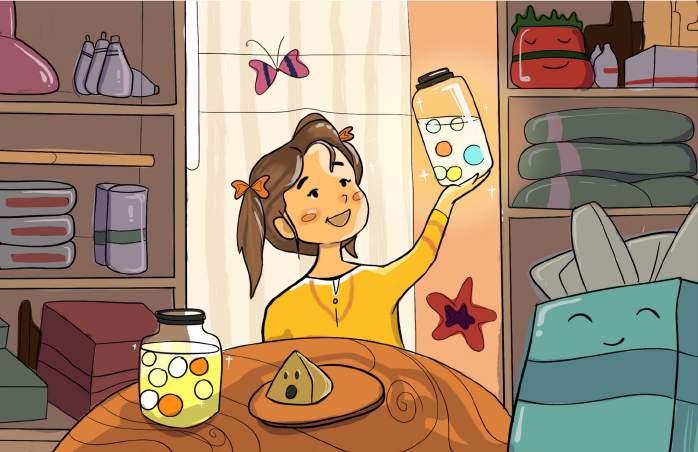
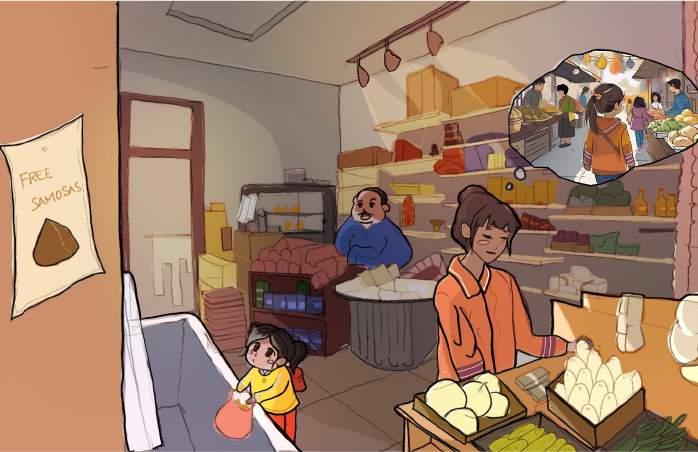
35
Primary Poster - axonometric of store with representations of interviews
Vignettes from childrens’ storybook
MAPPING AND ANALYSIS
Mapping, GIS Analysis, Data Analysis| Pittsburgh,PA ; Bangalore, India
Master of Urban Design | 2023
Individual Work
Instructors | Jared Abraham ; Suzy Li
The prompt for this exercise was “analyse your hometown”. Through the semester, the mapping project aims to capture Bangalore in a variety of mediums including analog collage, field conditions and layered mapping, AI and hand sketching. These mapping modes also vary from highly data oriented through GIS to a more psychogeographical, speculative quality.
Additionally, my mapping techniques draw on a variety of influences including analog collage methods to AI oriented data analysis.
I have also published research projects analysing the bus system and equity of public transport; soil quality and its impact on public health in Pittsburgh, Pennsylvania.These projects involved complex data mining as well as GIS analysis.
Digging Deeper : Investigating Pittsburgh’s Urban Soilscape
Bus Stop Distribution and Accessibility in Oakland
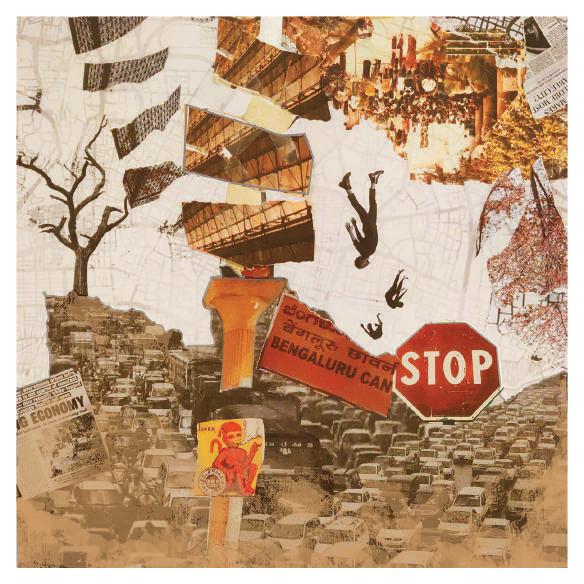
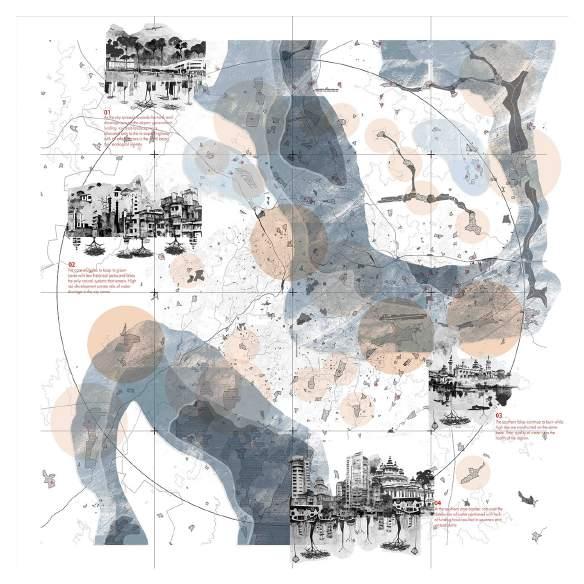


36
Top: Analog Collage from news articles ; Bottom: Points of water scarcity and water tables Top: Analysing density along a transect; Bottom: Impact of infrastructure on water systems
HYDERABAD RESIDENCE
Adaptive Reuse, Residential Architecture | Hyderabad, India
Professional Work | 2018-2021
Sanctuary Architects and Designers
Involvement | Project Lead
The project brief required an existing, dilapidated structure to be transformed into a private residence in an upscale neighbourhood of Hyderbad, India . The existing structure consisted of two main masses separated by a courtyard and lacked any aesthetic direction. The design proposal was in two stages, one which involved the structure itself and the other mainly towards the context. In terms of the building, an extra floor was added to the western mass and a series of roofs were juxtaposed onto the volumes to create a cascading terraced form. By introducing these terraces, the open terraces became usable shaded decks filled with landscape . Facade elements were introduced to cover and mute the staircase area and combine the volumes. A material palette of wood, concrete and local basalt stone was used for the exterior to achieve a contextual tropical modern style of aesthetic.
In terms of the context, a basement was provided as a split level and the top of this basement was made a large lawn and spillout for the ground floor. On the opposite side of the street, with the client’s and government approval,the barren land was developed into a community park.

37
Internal Program


The transformation of the external volume was followed by the repurposing and repositioning of the
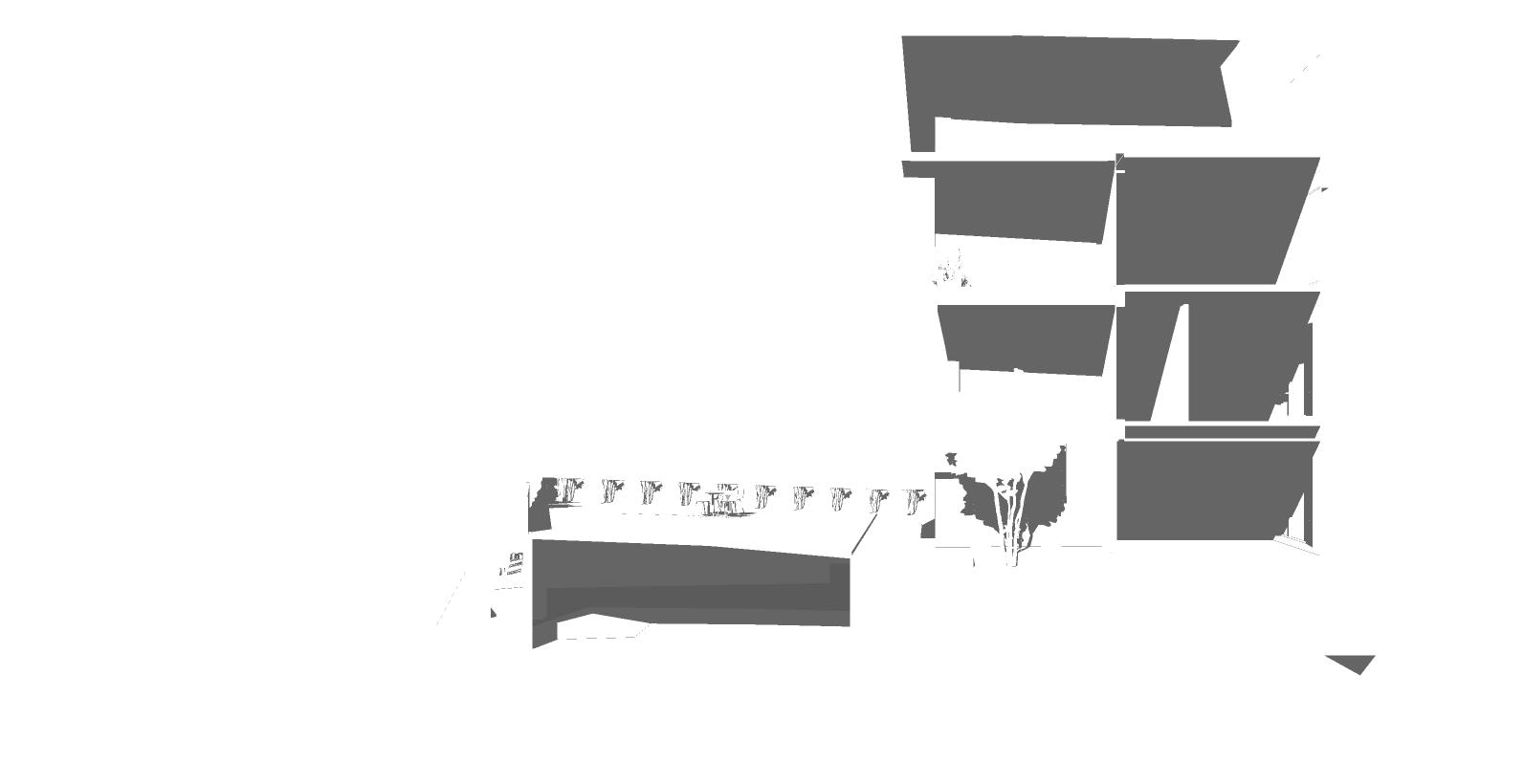
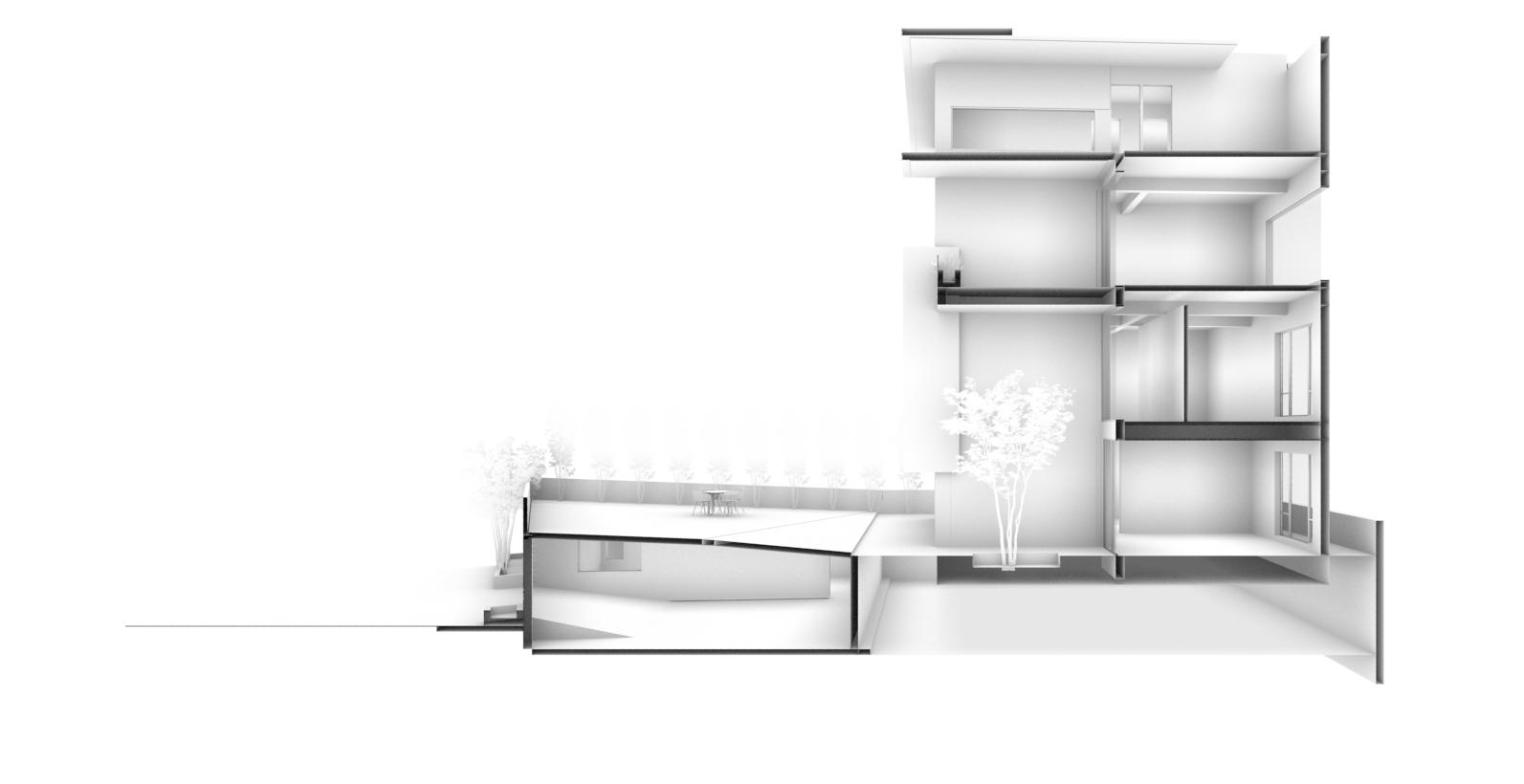
38 Existing massing Added floor and slab Added canopies Added facade elements Lawn and lift core Extension of green as park
1. Car Park 2. Security Cabin 3. Entry Porch 4. Foyer 5. Sit-out 6. Dining 7. Kitchen 8. Utility 9. Courtyard 10. Elevator 11. Courtyard 12. Formal Living 13. Powder toilet 14. Bedroom 15. Bathroom 16. Open lawns 9 10 11 12 13 14 15 16 5 CROSS SECTION THROUGH COURTYARD -1.00 m +1.90 m +2.35 m +5.35 m +8.35 m +11.35 m +14.35 m 1. Car
2. Open Lawns 3. Double height courtyard 4. Formal living 5. Corridor 6. Son’s bedroom 7. Private Bar and Lounge 8. Outdoor Lounge 9. Clothes’ Drying yard 1 2 3 4 6 7 8 9 5
GROUND FLOOR
Park
to
stacked
other.
ground floor was provided
social, living and dining spaces which opened
lawn.
upper
private
private entertainment zones.
interior spaces. The exsiting structure’s mass meant that functions had
be
on on top of the
The
with
into the
The
floors were more
with bedrooms and


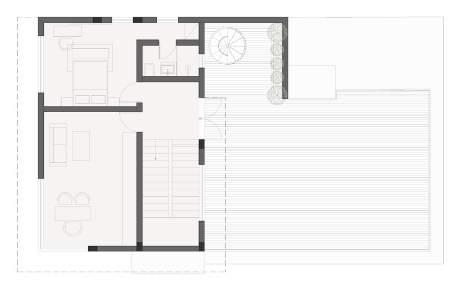
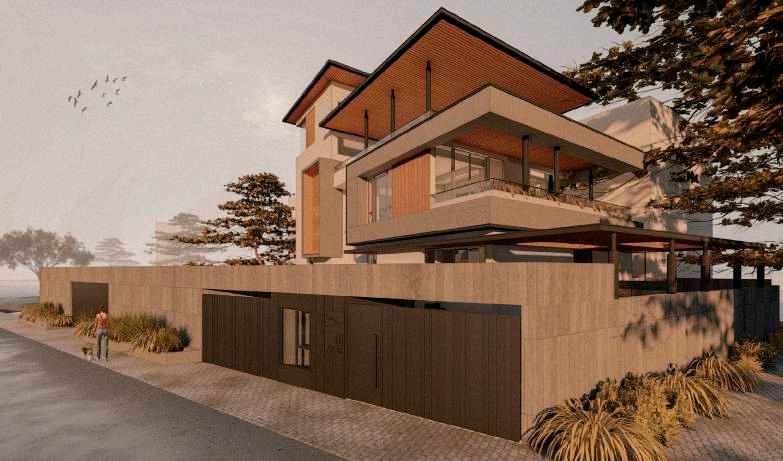

39 FIRST FLOOR SECOND FLOOR THIRD FLOOR
View from Eastern side with terraces and added canopies
1. Staircase 2. Master Bedroom 3. Master Bathroom 4. Son’s Bathroom 5. Son’s Bedroom 6. Elevator 7. Prayer/Puja room 8. Family lounge 9. Outdoor deck 1. Staircase 2. Home theater 3. Powder room 4. Pantry 5. Bar and Lounge 6. Elevator 7. Outdoor lounge 1. Staircase 2. Home office 3. Guest Bedroom 4. Bathroom 5. Drying Yard 6. Future expansion of terrace 1 1 1 2 2 2 3 4 5 6 3 4 5 6 7 3 5 4 7 8 6 9
Extended lawn from courtyard providing a private green space for the residents.
The Transformation

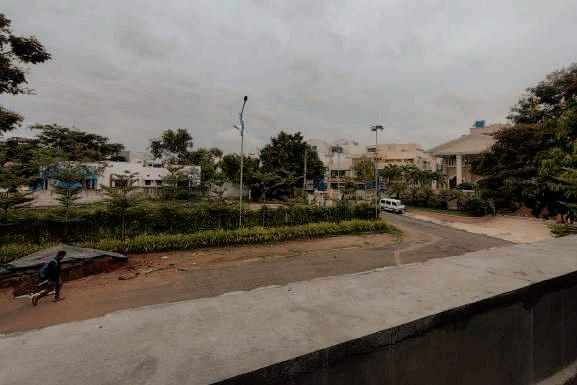
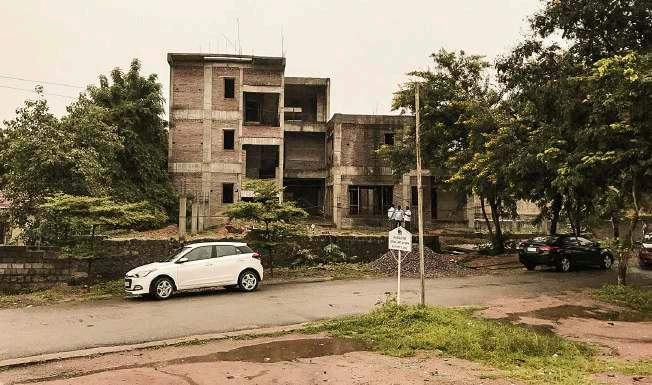



40
The existing parcel of land opposite the site was being used as a dump and was subject to anti social activities. Our proposal included the soft landscaping of the edge and allowing for the development of a park along with street lighting along the edge and corner
The existing structure was dilapidated and was open to the street resulting in illegal activities. By introducing a green buffer and raising the built on a podium, both privacy and an active green public interface were achieved.
Locally available teak and basalt were used as the main exterior materials and rooted the design to its place.
MANIPAL UNIVERSITY
Campus Planning, Institutional Architecture| Manipal, India
Professional Project| 2018
Collaborators | Aditya Puri, Nihal Saldanha, Rashmi Ravishankar
Involvement | Design, Drawing, Climate Analysis, Visualization
The competition was conducted by the Manipal trust, a well known educational institution in Southern India to design their new Faculty of Architecture block at the university town of Manipal along the western coast of India. The program was to cater to a total of 2500 students for a variety of tracks including architecture, interior design, urban design and fashion management. The site profile provided was a skewed rectangle and had a single approach road. The design sought to create a unique student experience which was based on a central spine which ran along the diagonal of the site. Using this as the datum, the faculty blocks were placed around and over it. Manipal has a hot and humid climate with heavy rainfall for 5 months of the year. Hence, the interaction zones are all enveloped by green and are semi covered. Green sleeves are provided in equal proportions in between the blocks to create more accessible scales between the user and built. The primary construction material used is laterite stone, available locally and is combined with concrete and metal frameworks to create a heterogenous aesthetic to the design. The entry plaza is covered by a space frame truss.

41
Entry and view towards southern block
The project is divided into three phases, each functioning on its own. The first phase simultaenously addresses the adaptive reuse of the King County Courthouse and the historical Yesler building along with the construction of the largest tower block on site. The second and third phase are spread out over the construction of the three towers and the infrastructure of the Yesler linkway which is a highway lid connecting across to the neighborhoods on the other side. The entire project is spread out over 10 years.
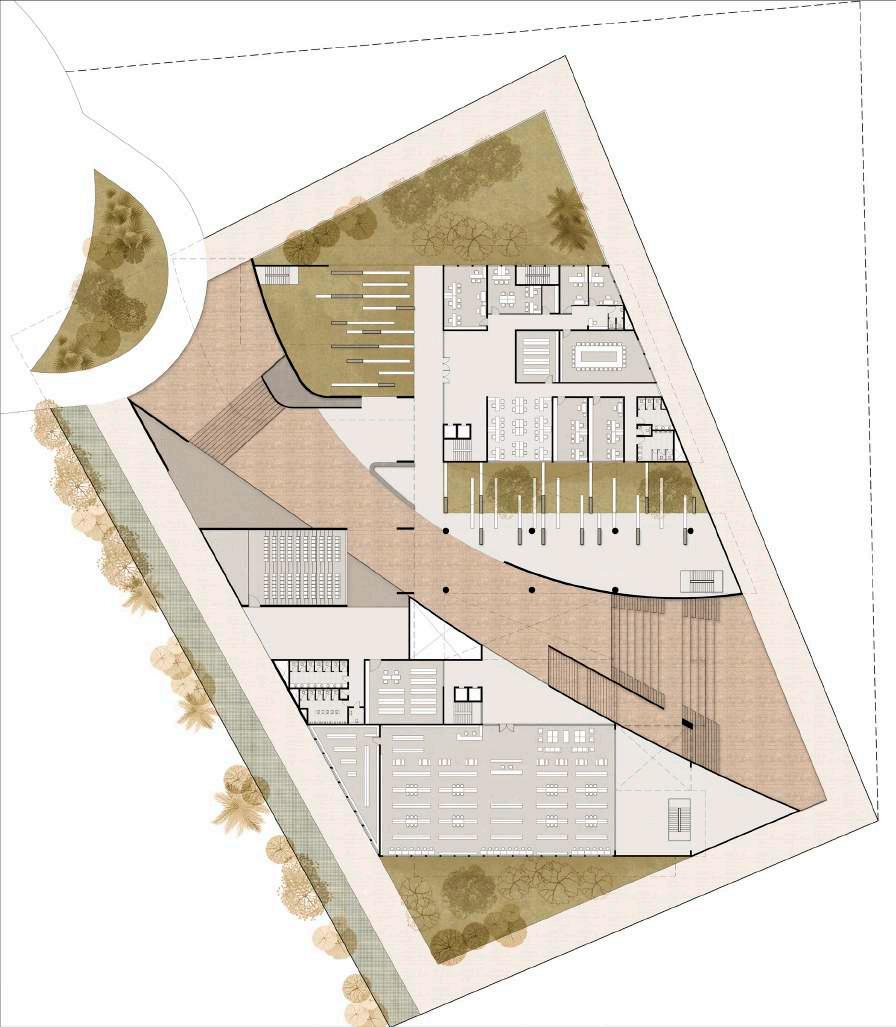



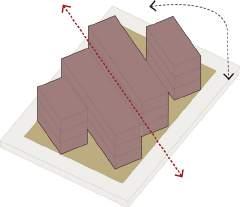

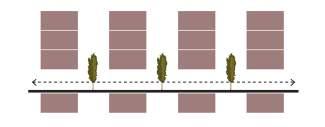

42 Using site setbacks and building completely with only two floors.
Splitting up building blocks to create green corridors and reduce scale.
Shifting volumes to create courtyards at varying levels and allow for natural ventilation and light to lower levels.
blocks along NE-SW direction to maximise natural ventilation . 1. Entry 2. Reception 3. Admin lobby 4. Consultancy cell 5. Quality and training 6. Joint Director 7. Director 8. Records 9. Board Room 10. Admin Office 11. Examination Office 12. Research and Collaboration 13. Toilets 14. Auditorium 15.Submission & Documentation 16. Library 17. Stock room 1 2 3 4 5 6 7 8 9 10 11 12 13 13 15 DN 16 17 18 14 GROUND FLOOR PLAN
Recessing building block and increasing height to achieve 50% green cover.
Reorienting
The building program is equally distributed among the first, second and third floor. While the first floor is mostly for undergraduate programs, the third floor is dedicated mainly to the graduate programs. The second floor in between is provided with workshops and common classrooms.
The admin block is also repeated on all floors as per the faculty with a direct connection to all the academic spaces. The green spaces act as buffers between the blocks and thereby provide individuality and identity to each space while still having an overall similarity in terms of aesthetic. These green zones act as interaction spaces between the classrooms.
The splitting of the blocks allows for crossventilation of all the classrooms and ample amount of sunlight throughout the day.


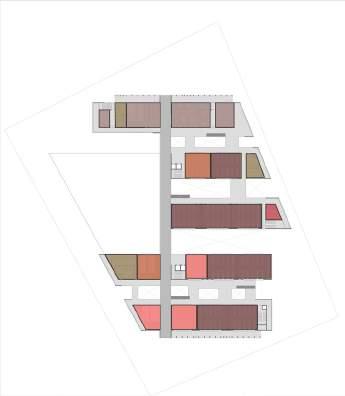


43
Administration +Faculty B.Des Interior Design Fashion Management Restrooms Masters - Architecture Masters - Urban Design Common Classrooms Interior Design Workshop
Amphitheater and view of blocks from southern side.
Shaded landscaped court and connecting spaces
NAVIGABLE
NEIGHBORHOODS
Mobility Planning, Transit Design| Mysore, India
Bachelor of Architecture|Professional Work
Spring 2016
Individual work
Advisor | Vinayak Bharne, USC School of Architecture
The Directorate of Urban Land Transport (DULT) for the state conducted a workshop which revolved around developing a master plan for a bicycle network in Mysore. The masterplanning was done carefully taking into account various factors of the city including accessibility, heritage and existing transport services. As such, design interventions/ inserts were needed to help boost the masterplan at strategic locations. The two projects have been chosen by DULT for implementation after the masterplan and the Public bike sharing system got a nod of approval from the state government. This makes Mysore India’s first city with a public bicycle sharing initiative. The first intervention is converting the city’s university campus street into a pedestrian street which would host flea markets, events and art installations. The second intervention placed at the entry to the the lake, is the main docking station and information kiosk for the city which would help customers redeem their bicycle rides for coupons and gifts as an incentive. The location also repurposes an old horse carriage stand as the docking area for the cycles.
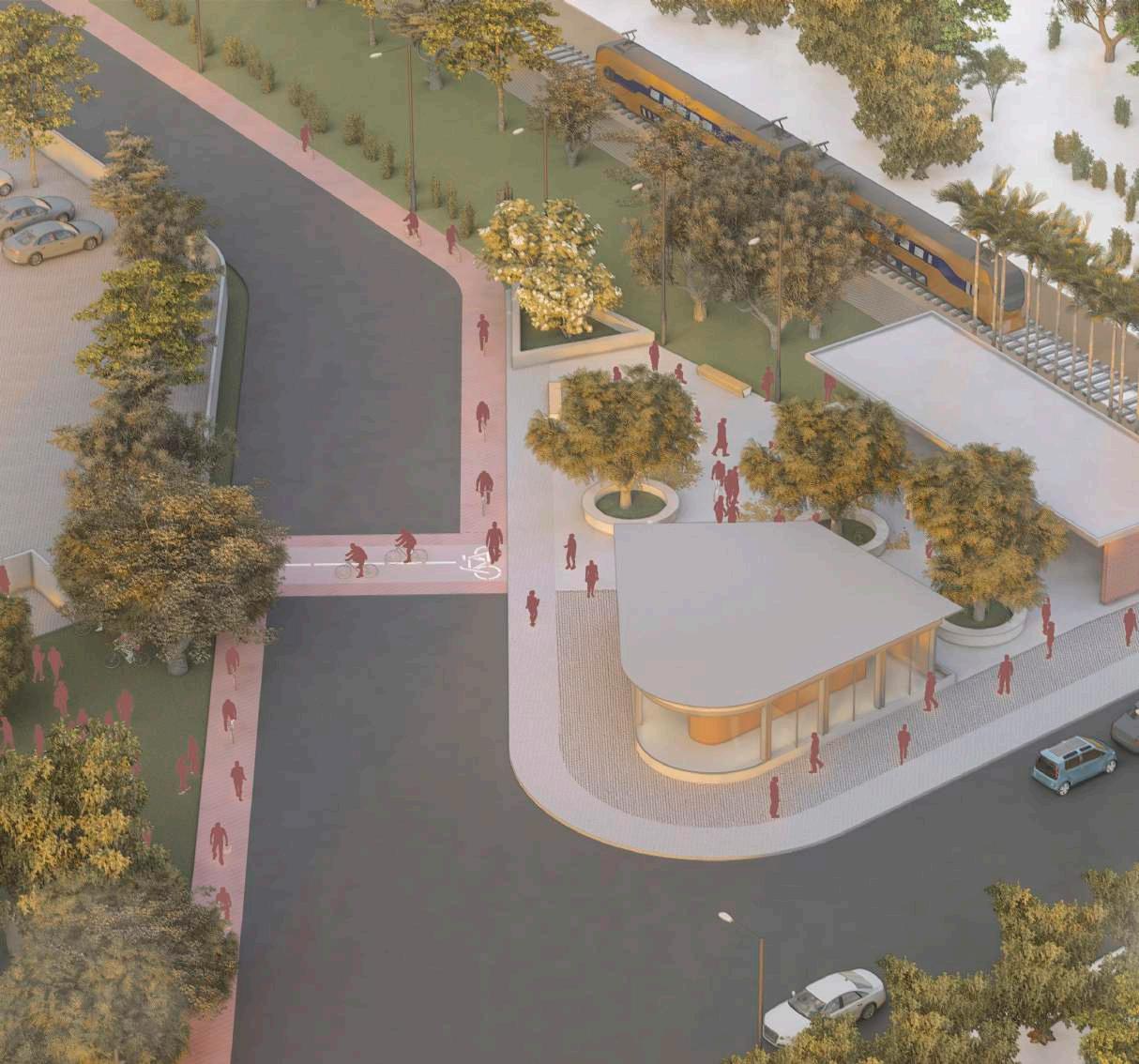
44






The areas of intervention are chosen based on their proximity to the State university, accessibility from residential neighbourhoods and interaction with the lake. The bicycle path is designed as an alternate network which takes the user from the palace located at the center of the city to main university campus street through residential neighbourhoods and green areas. The path has been designed so as to carefully avoid the state highway and allow access to it only when absolutely essential. Along the path, the experience is dotted by heritage buildings, green areas and well-lit paths. This strategy hopes to promote the use of bicycles in Mysore.
TRAFFIC ANALYSIS
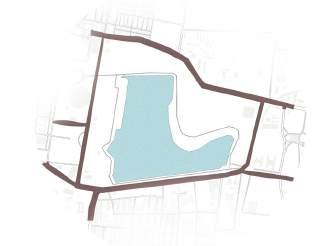
The lake becomes the focal point of the intervention with prime emphasis on the roads located adjacent to it. The lake road to the south and the campus road to the west are considered for the traffic analysis.



45
PUBLIC MOBILITY STRATEGY PLAN
STREET LIGHTING BUILDING TYPE BUILDING DENSITY 5 am - 9 am 11 am - 6 pm 7 pm - 11 pm 1. Mysore Palace 2. Commissioner’s office 3. Railway Junction 4. Kukkerhalli Lake 5a. Intervention area 1 5b. Intervention area 2 6. University Cricket ground 7. University Hostels 8. Heritage Museum 9. University Auditorium 10. Admin Office 11. State highway Docking station Bus stops Buses Cars Trucks Motorcycles Bicycles Intervention zone Primary bus route Secondary bus route Well lit streets Residential Commercial/Mixed use Institutional Dimly lit streets Proposed Plaza Docking station Bicycle path (palace road) Bicycle path (lake road) Heritage block Residential block 1 2 3 4 5a 5b 6 7 8 9 11 10
The Campus street -




EXERCISE+PLAY
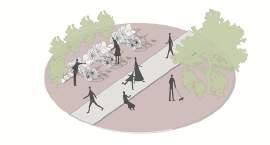

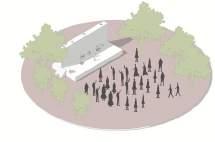
PERFORMANCE


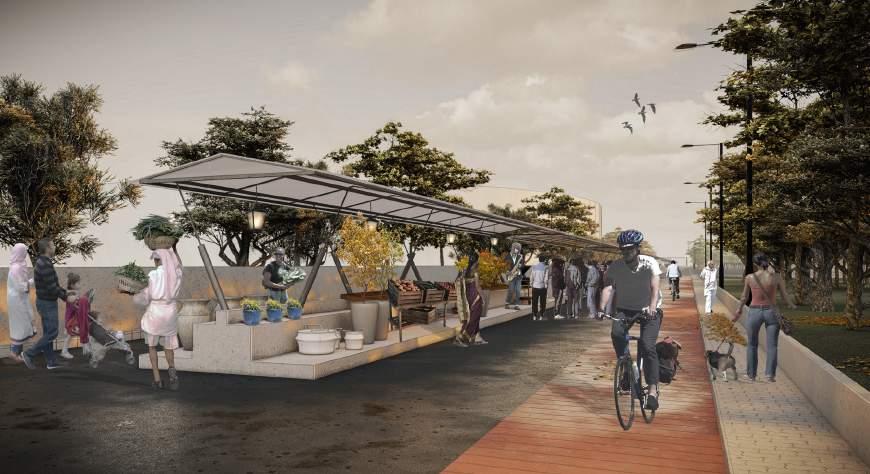

46
View of Campus street on weekends with pop up markets
View of Lakefront plaza with docking stations
EXISTING ROAD SECTION PROPOSED ROAD SECTION
PEDESTRIAN FOCUS
COMMUNITY
9.
10.
1 2 3 5 6 7 8 9 10 4
1. Pedestrian street 2. Plaza 3. Landscape feature 4. Proposed landscape 5. Kids’ play zone 6. Amphitheater 7. Viewing area 8. Lake
Cricket Stadium
Bicycle path
The Docking Station
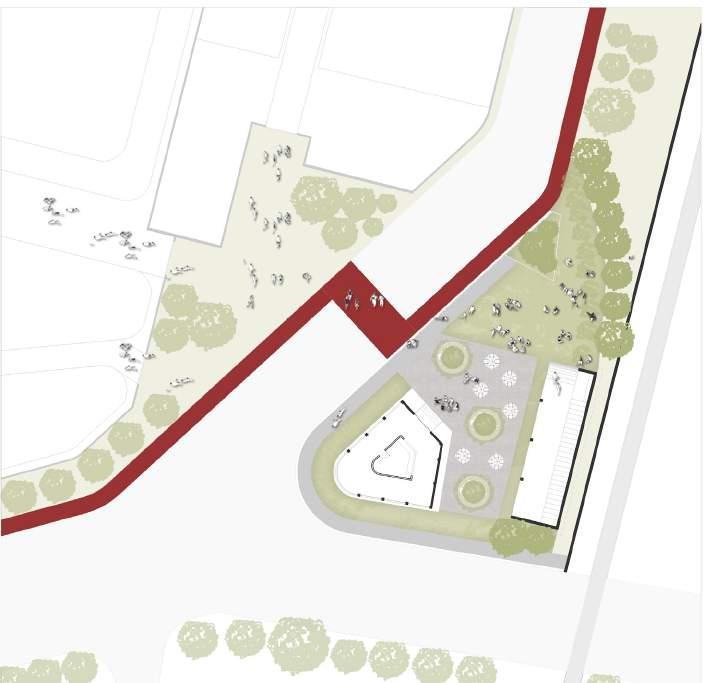
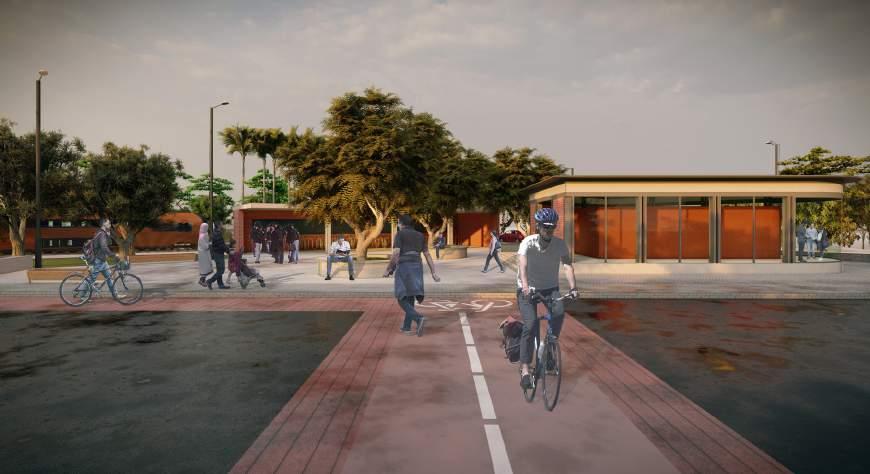
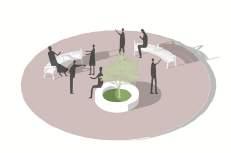


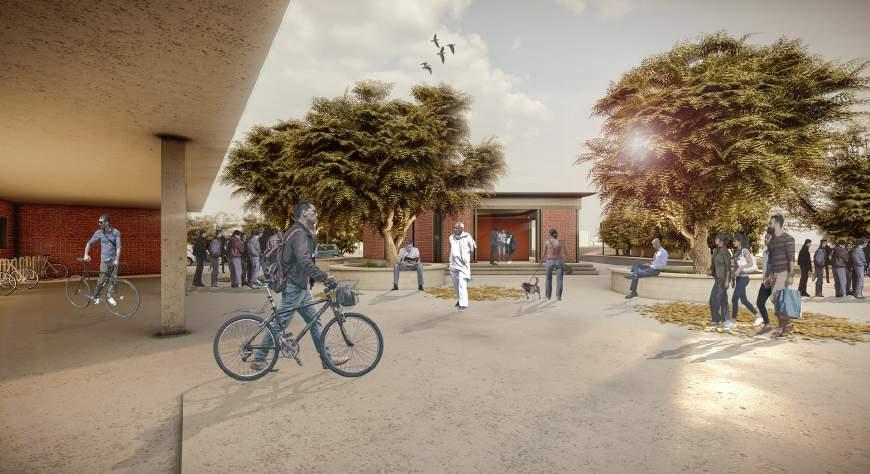
47
PLAZA + REST LAKE ACTIVATION INFORMATION
View of docking station and plaza through proposed bicycle paths
1 2 3 4 5 6 7 8 9 1. Information kiosk lobby 2. Information desk/server 3. Docking station 4. Public plaza 5. Bicycle and pedestrian crossing
8. Lake path 9. Railway crossing
View of repurposed horse carriage stand and plaza.
6. Landscaped Lake entry 7. Car parking

koushik.srinath04@gmail.com



























































































































































































